
BULLETIN
FALL 2006
VOLUME 52
NUMBER 3
PLANT SCIENCE
ISSN 0032-0919
Editor: Marshall D. Sundberg
Department of Biological Sciences
Emporia State University
1200 Commercial Street, Emporia, KS 66801-5707
Telephone: 620-341-5605 Fax: 620-341-5607
Email: psb@botany.org
The Botanical Society of America: The Society for ALL Plant Biologists
Crime-Solving Plants, Shirley Graham...................................................................................78
News from the Society
Botanical Society of America Centennial Awards.................................................84
BSA Graduate Student Research Awards
J.S. Karling Graduate Student Research Award...................................85
BSA Graduate Student Research Awards.............................................85
Vernon I. Cheadle Student Travel Awards.............................................85
Ecology Section Student Travel Awards.................................................85
Mycological Section Studet Travel Awards.............................................85
Phycological Section Student Travel Award...........................................85
Ptericological Section Student Travel Awards.......................................86
BSA Education News and Notes
BSA Education Outreach Program Evolves, Expands.........................86
Botanic Gardens Break New Ground in Informal Science Education...87
Evolution Supported by State Standards and Professional Societies...87
Progress Along the Pipeline.....................................................................87
Botanists in Education
Enhancing Botanical Education with Project 2061 Publications.......88
Field Botany 323: An Alfred Hitchcock Movie, Almost...........................88
Announcements
In Memoriam
Ralph Erickson, 1914-2006......................................................................88
David Lloyd, 1938-2006.............................................................................91
Daphne J. Osborne, 1930-2006..............................................................92
Personalia
Anitra Thorhaug. UN Who’s Who of Women and the Environment..93
Bobbie Angel, Botanical Illustrator, receives Jill Smithies Award.....93
Award Opportunities
American Philosphical Society Research Awards...............................94
Symposia, Conferences, Meetings
50 Years of the Phytochemical Society of Europe................................95
Rock On, Celebrating Stone in the Garden...........................................96
Other
Help Wanted, Ancient Trees Website.....................................................96
Some Biogeography and Biography on the web..................................96
Brooklyn Botanic Garden Science Research Interns win Grand Prize
in National Science Research Contest.................................97
Books Reviewed.........................................................................................................................98
Books Received.......................................................................................................................106
Botany and Plant BIology 2007.............................................................................................108

7 8
Plant Science Bulletin 52(3) 2006
P
LANT
S
CIENCE
B
ULLETIN
POSTMASTER: Send address changes to:
Botanical Society of America
Business Office
P.O. Box 299
St. Louis, MO 63166-0299
E-mail: bsa-manager@botany.org
Address Editorial Matters (only) to:
Marsh Sundberg, Editor
Dept. Biol. Sci., Emporia State Univ.
1200 Commercial St.
Emporia, KS 66801-5057
Phone 620-341-5605
E-mail: psb@botany.org
ISSN 0032-0919
Published quarterly by Botanical Society of America, Inc., 4475 Castleman Avenue, St. Louis,
MO 63166-0299. The yearly subscription rate of $15 is included in the membership dues of
the Botanical Society of America, Inc. Periodical postage paid at St. Louis,MO and additional
mailing office.
CRIME-SOLVING PLANTS
Recently I was asked to provide text for a projected
graphic display on the subject of forensic botany at
the National Botanic Garden, Washington, D.C.
Subsequently, the program directors asked me to
expand on the display with a lecture entitled, “Crime-
Solving Plants” for a public audience at the Garden.
Bill Dahl, Executive Director of BSA, was directly
involved in the original idea and later suggested
that I submit the talk to the Plant Science Bulletin.
The text follows below together with literature
citations added to allow anyone interested in using
the information to refer to some of the original
studies and to see some of the illustrations that
accompanied the presentation.
Early in January, 1935, a man named Arthur Koehler
worked his way through crowds of people gathered
outside the courthouse in Flemington, New Jersey.
He was there to testify in one of the most important
trials of the 20th century, the trial of Bruno Richard
Hauptmann for the kidnapping of the young son of
aviation hero Charles Lindbergh and his wife Anne.
Dr. Koehler was an expert on wood anatomy and
identification at the Forest Products Laboratory,
United States Forest Service in Madison, Wisconsin
and what was unique about the particular testimony
he was about to give was that it dealt with the
structure of wood, namely the wood of the ladder
used by the kidnapper. Presenting that kind of
evidence was highly unusual, there was little
precedence for it, and it was not clear it would even
be allowed. The use of scientific expert witnesses
was an uncommon and limited practice at that time
and botanical evidence had little standing in the
criminal courts.
The defense argued strongly against allowing Dr.
Koehler to testify, saying “there is no such animal
known among men as an expert on wood; that it is
not a science that has been recognized by the
courts; that it is not in a class with handwriting
By the time you read this we already will have celebrated
100 years of the Botanical Society of America at our
centennial meeting in Chico, California. One hundred years
ago the founders were concerned with not completely
replacing the “old botany” of the external form and affinities
within the plant kingdom, that was no longer attracting the
new generation of students, with the exciting “new
botany” of anatomy and physiology (anon., 1887).
Furthermore, some of these botanical leaders were
convinced that a change in pedagogy was required.
William Ganong suggested: “In the laboratory work
everything possible should be done in the independent
investigation spirit. The student should be led on by having
each new thing placed before him in the form of a problem,
so arranged that its solution comes just within his own
powers…In general, nothing should be told a student that
he can find out for himself.”
Times have changed, but some things seem to remain the
same. There is still an “old botany” (now including anatomy
and traditional physiology) and the exciting field is molecular.
Yet we realize that knowledge of the “old fields” remains
necessary and those fields are benefiting from application
of the new techniques. And we are still struggling with
improving pedagogy to make students more active in their
own learning.
In this issue we highlight some tools employed by
contemporary botanists to engage students in both formal
and informal settings. In our feature article Shirley Graham
describes some of the forensic botany from an exhibit she
helped prepare for the National Botanical Garden. (Have
any of you introduced the microscopy lab with a “who done
it?” and a variety of microscopic clues?). Later Keith
Killingbeck provides an abstract of some of the innovative
student writing he uses to enhance his field botany course.
Finally, we provide an entry to some of Tim Gerber’s work
with school teachers getting them excited about using
plants to “teach to the standards.”
Enjoy the issue!
The editor
Anonymous. 1887. The Botanical Gazette 12(4):87-88.
William F. Ganong, 1907, The Teaching Botanist. New
York, Macmillan.

7 9
Plant Science Bulletin 52(3) 2006
Editorial Committee for Volume 52
Joanne M. Sharpe (2009)
Coastal Maine Botanical Gardens
P.O. Box 234
Boothbay ME 04537
joannesharpe@email.com
Nina L. Baghai-Riding (2010)
Division of Biological and Physical Sciences
Delta State University
Cleveland, MS 38677
nbaghai@deltastate.edu
P
LANT
S
CIENCE
B
ULLETIN
Douglas W. Darnowsk
i (2006)
Department of Biology
Indiana University Southeast
New Albany, IN 47150
ddarnowski2@ius.edu
Andrea D. Wolfe
(2007)
Department of EEOB
1735 Neil Ave., OSU
Columbus, OH 43210-1293
wolfe.205@osu.edu
Samuel Hammer (2008)
College of General Studies
Boston University
Boston, MA 02215
cladonia@bu.edu
experts, with fingerprint experts, or with ballistic
experts... The witness probably may testify as an
experienced carpenter or something like that, ….
but when it comes to expessing an opinion as an
expert or as a scientist, why that is quite different
indeed. We say that the opinion of the jurors is just
as good...” (Pope 1935). The judge responded, in
what we can now consider to be an historical
moment for forensic plant science, “I deam [sic] this
witness to be qualified as an expert” (Trenchard
1935).
Koehler subsequently went on in the trial to
demonstrate how the wood of the ladder, beyond
any doubt, linked Hauptmann directly to the crime.
The ladder was a unique design, homemade, and
in 3 parts that could be disassembled to fit in a car.
Koehler presented three kinds of information from
his study of the ladder - 1) identification of the wood
used, 2) physical marks left by tools on the wood,
and 3) comparisons of the wood structure. He was
able to determine that the wood used in the ladder
was of four kinds: douglas fir (Pseudotsuga
menziesii (Mirb.) Franco), 2 types of pine (Pinus
ponderosa Dougl. ex Laws. and Pinus echinata
Mill., or a close species, commonly called yellow
pine) and birch (Betula sp., probably B. alba L.)
used for the connecting dowels. In making the
identifications he saw the characteristic presence
in pine of very thin epithelial cells lining the resin
canals, while in douglas fir he distinguished
characteristic thick-walled cells lining the canals
and faint spiral markings along the length of the
tracheids (Fig. 1). The wood of the top left rail had
clearly been used before. It had been sawn away
from a bigger piece and there were nail holes
present made by old-fashioned square-headed
nails. Koehler alerted authorities to look for a
missing board in any place connected with a future
suspect. Remarkably, Koehler using scarcely
visible planer markings was able to trace the some
of the pine back to its original mill source in
McCormick, South Carolina and then forward to the
National Lumber and Millwork Co. in the Bronx, NY
just 10 blocks from Hauptmann’s home. This was
prior to Hauptmann’s arrest after passing a bill from
the ransom money. A week after the arrest, police
realized that one of the floor boards in Hauptmann’s
attic had been partly cut away. Koehler was able to
show in the trial that the attic board and the ladder
rail had once been a single board by the exact match
of annual rings (Fig. 2) and importantly, he
demonstrated that patterns of annual rings are
unique so that no other random board would have
an absolutely identical pattern, just as today we
demonstrate that portions of our DNA are unique to
each individual. The wood anatomical evidence
Figure 1. Cross-sections of gymnosperm wood. Pinus
echinata Mill. (top) and Pseudotsuga menziesii (Mirb.)
Franco (bottom)

8 0
Plant Science Bulletin 52(3) 2006
ultimately was one of the most incriminating and
unshakable pieces of evidence that led to
Hauptmann’s conviction and eventual electrocution
for the kidnapping (Graham, S. 1997).
Since that trial, what is termed forensic botany, or
the use of plant remains to help solve crimes or
other legal problems, has been widely accepted as
valid scientific evidence by the courts. If the wildly
popular televison crime shows like CSI, Law and
Order, Cold Case, and many others reflect to some
degree how real life detective work proceeds, then
plants are now beginning to play an increasing role
in solving crimes. In February this year in a TV
episode of “Bones”, one of the forensic
anthropologists finds part of an ear bitten off the
killer of a young woman. On the ear is ear wax within
which pollen is embedded. As the story continues,
the pollen is identified as a species of the grass
genus Eragrostis, a species said to grow only in
South Africa, and this leads the scientists to a
suspect who has just come from there. I comment
further on this story later, but the point here is that
although this particular case is fiction, plants or
parts of plants can provide significant supporting,
sometimes, crucial evidence in solving crimes.
The reasons for this are several: 1) plant remains
can be found almost everywhere; 2) they offer
multiple sources of evidence, both macroscopic
and microscopic, such as pieces of wood, (even as
charcoal), seeds, fruits, leaves, twigs, plant hairs,
microscopic air-borne pollen and spores, or in
aquatic environments, algal cells; 3) their
morphological diversity allows us to identify them
and from the identification gather other useful
information such as the season or geographical
location in which a crime took place, whether a body
has been moved following a murder; if a body is
buried, how long it has been buried, and whether a
suspect was present at the crime scene.
Pollen and spores, in particular, have all the useful
characters just mentioned. Being widespread in
nature in the air and on most surfaces, we breathe
them into our lungs and they stick to our clothes.
Pollen and spore exines are amazingly diverse,
sometimes even to the species level, and their
production is generally seasonally and often
geographically restricted, thus their presence can
point to a specific season, sometimes even a
specific location, in which a crime was committed
(Szibor, R. et al. 1998). There are many published
examples of pollen morphology among related
families or within families or genera that illustrate
this diversity and consequently their usefulness as
trace evidence (e.g. Nowicke and Skvarla 1977,
Caryophyllales; Graham, A. and Barker 1981,
Fabaceae, Caesalpinioideae; Patel et al. 1984,
Myrtales; Bruce and Dettmann 1996; Fig. 3). In
addition, they have other advantages. They are slow
to decay; pollen can be retrieved from rocks millions
of years old, a valuable asset for oil companies and
archeologists. Because they are microscopic, they
remain unseen, silent witnesses and even if they
were visible, unlike fingerprints, they would be
nearly impossible to eliminate from a crime scene.
A recent example from New Zealand illustrates how
pollen as trace evidence was used to solve a crime
(Mildenhall 1998). In Christchurch in 1997, a young
woman was grabbed, pulled into an alleyway, and
raped. Although shaken, she was able to describe
the assailant and shortly after a man matching her
description was arrested. The suspect admitted
being in the area and noticing this woman, who
seemed a little distressed, he said he stopped to
ask her if she was OK. Now, he claimed, she must
be putting his face on the face of the rapist, because
he had not been in the alleyway. There was no DNA
evidence, but the police noted dirt-stains on his
clothes. These, he said, came from his yard where
he was working on his car.
The alleyway where the crime occurred was lined
along one side by a row of low flowering shrubs of
wormwood, Artemisia arborescens L. a
Mediterranean native. The shrubs had been broken
and flattened during the struggle that led up to the
rape. The suspect’s clothes with the dirt stains were
sent for analysis together with a comparative sample
of soil from the crime scene to the forensic palynology
laboratory of the New Zealand Geological Survey.
The soil sample was dominated, as might be
expected by pollen of Artemisia (77%), much of it
occurring in clumps, indicating the source was at
the scene and had not merely blown in. The pollen
of this genus has a distinctive, echinate (spiny), very
Figure 2. Attic floor above Hauptmann’s apartment. with
the top left rail of the ladder (right) in place as a continuation
of the floor board (left) from which it was fashioned; one
nail corresponding to nail hole in the rail and floor joists
visible on the rail. With permission of the United States
Forest Service.
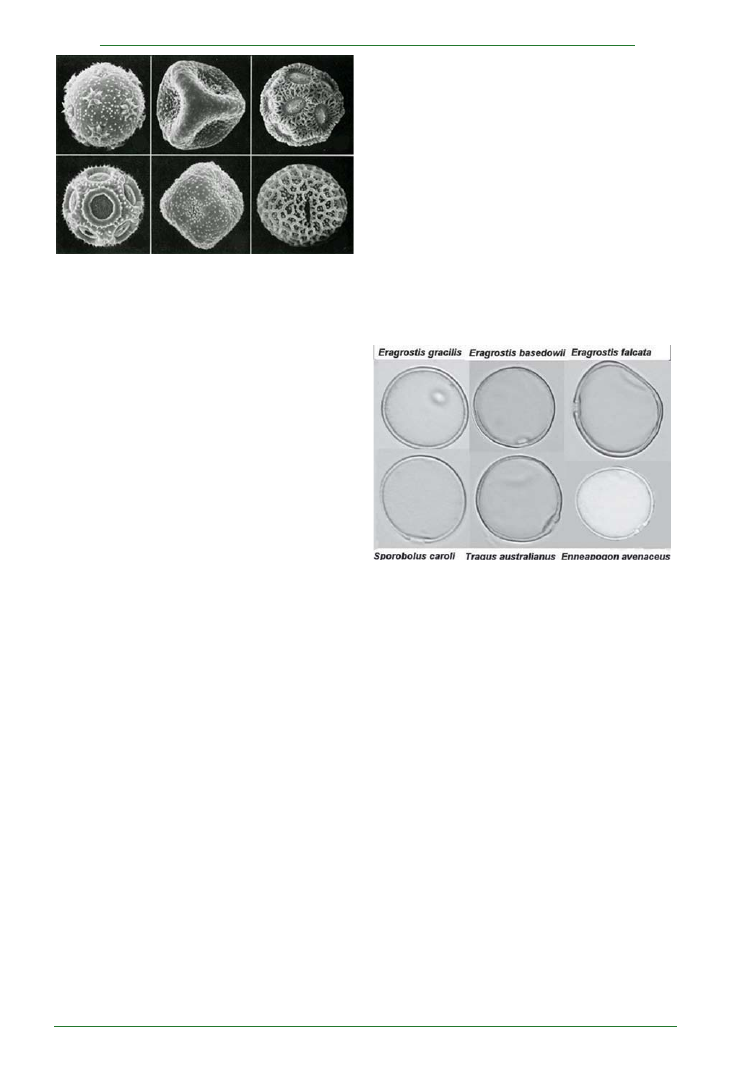
8 1
Plant Science Bulletin 52(3) 2006
thick-walled exine. There was a mix of mix of fresh
pollen and somewhat older, darker colored grains,
as well as an unusual large, thick-walled fungal
spore in the soil sample, and other spore and
pollen types in very low percentages. The same
Artemisia pollen dominated the clothing sample
(53%), again occurring mainly in clumps, in a mix of
fresh and older grains, and the same thick-walled
fungal spore type was abundant. The percentage
of Artemisia was so high that the only explanation
was that the clothing was in direct, forceful contact
with an Artemisia plant. Investigators searched for
wormwood near the suspect’s home, and other
places he visited but found none. The species is not
common in New Zealand, being only occasionally
planted in gardens. The forensic laboratory had
processed over 1000 pollen samples from many
localities in New Zealand and never found Artemisia
in more than a trace amount, so the chances of
finding large amounts were statistically 1 in 1000,
but in actual fact, chances were certainly much
lower. The fungal spores were also rare. This
pollen and spore evidence was presented at the
trial, the suspect was convicted, and was given an
8 year prison sentence. Similar comparative pollen
evidence led to conviction of a murder suspect in
northern Australia (Milne 2005), and in a civil case
where pollen intake to a gasoline line was cited as
the cause of a fatal plane crash, pollen provided
important evidence negating the claim (Graham, A.
1997).
Returning to the use of plants in crime TV shows,
and specifically the finding of Eragrostis grass
pollen in ear wax that led to a suspect, the science
of this story presents a bit of a problem. Although
many plant groups have spectacular pollen
morphology, not all pollen is remarkable structurally
and sadly the pollen of grasses, one of the most
common and widespread plant families in the
world, is nearly as feature-less as a ping-pong ball,
so it would have been impossible to identify an
Eragrostis plant to genus or species and pinpoint
the geographical source based on pollen (Fig. 4).
An interesting exception in the pollen of grasses is
cultivated corn which has extremely large pollen, ca.
100um in diameter, compared with a more average
pollen diameter of ca. 35um..
Seeds and fruits, like pollen, very often give away
their identity by their specialized features, especially
if they are provided with hooks or barbs. These
structures have evolved to aid in dispersing progeny
away from competition with the parent plant and are
very effective in their role, as anyone who has
walked through a field in summer or fall has
experienced. In 1997 in Ohio, I was called by the
sheriff’s department of Champaign Co. near
Columbus, Ohio to identify some seeds (actually
single-seeded fruits) associated with the murder of
two children. The children were found buried in an
area at the shady wooded margin of a local cemetery
not long after they were reported missing by the
stepfather. He soon became a suspect. I identified
the seeds as from Geum canadense Jacq. (or
possibly Geum aleppicum Jacq. with very similar
fruits), commonly known as avens, in the Rosaceae
and from Galium aparine L., bedstraw, in the
Rubiaceae, species of shaded to partly sunny places
in dry to moist somewhat disturbed woodlands
(Fig. 5). The seeds had been removed from a
blanket and the stepfather’s clothing recovered at
his house. He claimed the seeds came from his
small farmyard, but neither plant occurred in his
open weedy yard, nor would they have been expected
there. Both species were found at the gravesite. The
seed evidence linked the suspect to a wooded area
such as that of the gravesite and was part of the
evidence introduced at the trial (State of Ohio vs.
Kevin Neal, 2000). He was convicted of the two
Figure 3. Diversity of pollen morphology in Centrospermae.
From Nowicke and Skvarla 1977 with permission.
Figure 4. Pollen of the grass genera Eragrostis, Sporobolus,
Tragus, and Enneapogon illustrating the absence in most
grass pollen of useful characters for identification. With
permission of The Newcastle Pollen Collection.
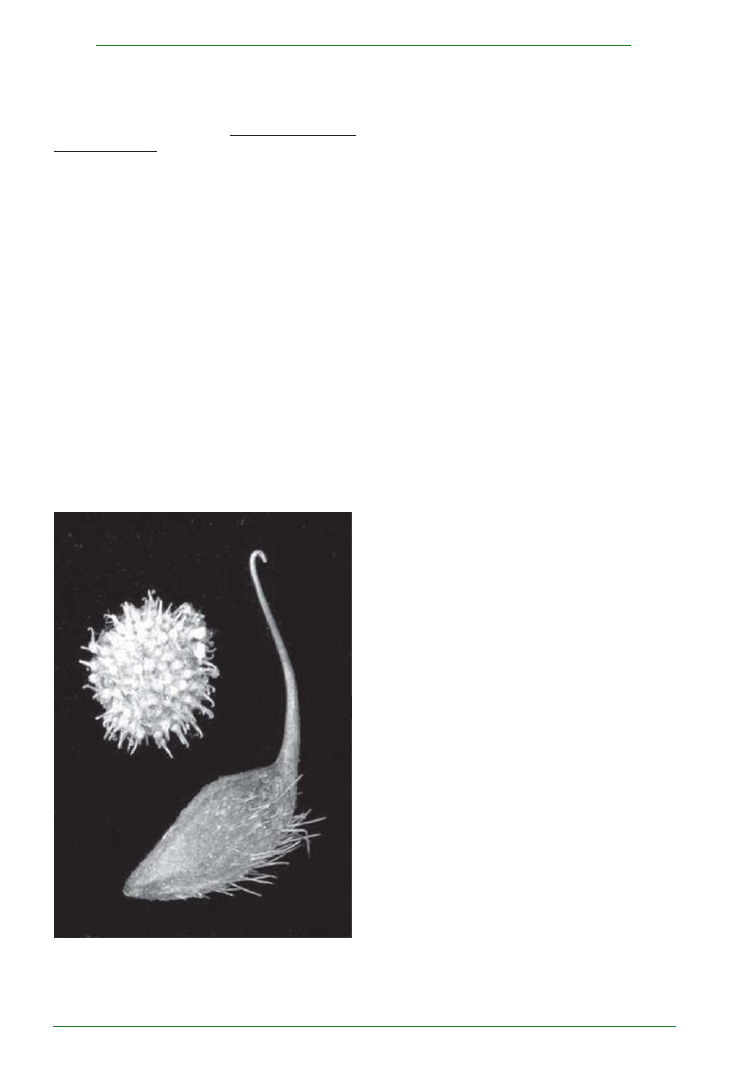
8 2
Plant Science Bulletin 52(3) 2006
murders and is now serving two life sentences.
Similar investigations employing seed evidence
from crime scenes have been reported by Lipscomb
and Diggs (1998) and in a case investigated by
David Hall, summarized at www.nwf.org/wildlife/
wildlifecrime.cfm.
Botanical trace evidence is also obtained from plant
cells found in gastric contents. Many of the common
foods we eat contain seeds or other plant parts with
specialized cells having thick walls of cellulose and
lignin. Because these materials do not digest or
digest only slowly they can be present in partially
digested stomach contents or excreted in feces,
and are often able to be identified in degraded form
(Bock, J. H. et al. 1988). It is sometimes possible
to determine components of a victim’s last meal
which, in turn, can provide clues to the setting or
timing of death. In a particularly tragic case in
London in 2001, partially digested plant material
even gave a clue to the victim’s homeland and
suggested a reason for his death.
The case began in September, 2001, when the
torso, minus limbs and head, of a young boy 4-7
years in age was found in the Thames River. There
was little to use for identification based on standard
techniques and there were no corresponding
missing child reports. Scotland Yard suspected
from the condition of the body, which had been
deliberately drained of blood, that they might be
dealing with a ritual killing – a human sacrifice. They
turned to forensic scientists, including a palynologist
and a plant anatomist to look for whatever evidence
might give them a lead in the case. DNA suggested
the child was West African in origin and the contents
of the digestive tract revealed alder (Alnus) pollen,
a tree native to northern Europe, and was an
indication that the child had been in England in the
days prior to his death.
Of greatest interest was the presence in the stomach
and intestines of an unusual assortment of small
mineral pieces, clay pellets embedded with minute
gold particles, and the remains of some type of
bean seed. The anatomy of seeds in some plant
families, including the legumes (Fabaceae), the
mustards (Brassicaceae), and the tomato-potato
family (Solanaceae), is quite distinctive and can
even be species-specific in some taxa. By comparing
seed coat anatomy from the stomach contents of
the boy, the seeds were closely matched by a plant
anatomist at the Royal Botanical Gardens in Kew to
a highly poisonous legume from West Africa, the
Calabar bean (Physostigma venenosum Balf.).
Anatomical recognition of legume seeds is possible
because the outermost cells of the seed coat consist
of a diagnostic palisade layer in which the cells are
typically narrow, elongate, and very thick-walled. It is
the heavy walls that make them resistant to quick
dissolution. The next deeper layer also can be quite
diverse and help in narrowing an identification. The
presence of Calabar beans in this case, mixed with
the other unusual items in the stomach, suggested
the child had been given a toxic paralytic voodoo
potion. This finding pointed, like the DNA, to areas
of West Africa, like Nigeria, where witchcraft is
known to be practised still, and it supported the idea
that the child had been a human sacrifice.
Further investigations, using bone chemistry,
narrowed the home of the boy to an area near Benin,
Nigeria, where Calabar bean is native and where
animal, and rarely human, sacrifice is performed.
Thus far, no one has been arrested for the murder
but as part of the investigation, a ring trafficking in
people from Africa into Great Britain and Germany
was uncovered and shut-down and 21 people
involved were arrested, including the man who
brought the child from Africa (The Guardian 2004;
see also National Geographic Channel
presentation, “The Witchcraft Murder”, 13 Feb 2005).
Today the fastest growing component of botanical
evidence in forensics is molecular evidence. We
are in early stages of this type of plant trace evidence.
The first instance in which data from plant DNA was
accepted as admissible evidence in a criminal
Figure 5. Hooked seeds transported from a burial site on
a murderer’s clothing. Galium aparine L. (left) and Geum
canadense Jacq. or Geum aleppicum Jacq. (right). Photo
by S. Graham.

8 3
Plant Science Bulletin 52(3) 2006
.
case was in Arizona in 1992. In that case, State of
Arizona vs. Bogan, a young woman was murdered
and her body dumped in the desert. The suspect
was taken into custody after his pager was found
near the site. He claimed he had given the woman
a ride and that she had stolen his wallet and pager
from his truck. A member of the Maricopa Co.
investigating team, Charles Norton, happened to
notice that one of the palo verde trees (Parkinsonia
microphylla Torr.) at the scene was freshly scraped,
possibly by the murder’s vehicle. On an impulse he
picked some seed pods hanging from the tree;
later, the same kind of pods were found loose in the
open truck bed of Bogan’s truck and Norton, knowing
that DNA could identify human individuals, thought
perhaps the pods could be linked by their DNA to the
tree at the crime scene. Dr. Tim Helentjaris, a
geneticist at the University of Arizona agreed to try.
Using RAPDs (Randomly Amplified Polymorphic
DNA) to produce profiles of visualized DNA
fragments- a kind of ‘fingerprint’ of individuals
being studied, he was able to match the DNA from
the 2 seed pods found in the truck to the seed pods
collected from the tree at the scene and only to that
tree. This was because the palo verde trees had an
exceptionally high degree of intraspecific genetic
variation (Yoon 1993). The truck, if not the suspect,
had definitely been at the site. The jurors agreed
Helentjaris’s findings were very influential in their
decision to find Bogan guilty of first degree murder.
In recent plant DNA research, botanists at the
Australian National University in Canberra, Australia
have produced a prototype identification system for
grasses based on DNA, a kind of molecular
taxonomic key (Ward et al. 2004). Although grass
pollen is not generally helpful in forensics, other
parts of grasses like seeds and stem or leaf
fragments can be a good source of DNA and
because grasses are among the most likely plants
to be encountered as trace evidence, a means of
identification would be a valuable tool. In their study,
using primers designed for the purpose, they
sequenced parts of the mitochondrial genome that
were representative of subfamily, tribe and genus
ranks within a test set of 20 samples. These were
then used to identify 25 unknown grass samples in
a blind test. With more complete representation,
the possibility of identification of many more kinds
of grasses by molecular means seems to be within
reach.
It is unfortunate that in this country, botanical trace
evidence is still poorly integrated into crime scene
analyses, in spite of its potential in many situations.
In 1990, a survey of 30 of the largest forensic
laboratories in the United States found that only 2
knew pollen could be used as a forensic tool (Bryant
and Mildenhall 1990). This figure has not risen
significantly in the past 16 years even though
criminal investigations are becoming more
sophisticated in treating other aspects of trace
evidence (Bryant and Jones in press).
In great part, the failure to incorporate botanical
evidence in investigations is due to lack of
knowledge about plants by personnel who study
crime scenes and so fail to collect it. The FBI’s 2003
Handbook of Forensic Services (www.fbi.gov)
mentions the usefulness of wood and cotton fibers
and explains how these should be submitted for
examination, but refers to no other kind of supporting
plant evidence. Unless plant parts are
conspicuously evident, samples of plant materials
are not standardly taken, nor are specialists brought
in to record critical observations of vegetation that
could yield credible evidence.
The assessment of plant evidence requires well-
trained specialists and frequently also access to
extensive reference collections. Today, specialists
in plant systematics, plant anatomy and morphology,
and palynology are relatively few in number, and
aging, and younger replacements are increasingly
rare. The balance in plant science research has
tipped so heavily toward molecular-based research
that students interested in whole plant-based
studies find fewer and fewer relevant botany courses
available at universities, little research support at
the graduate level, and few job opportunities. The
value of botanical trace evidence in criminal and civil
cases has been clearly demonstrated and is
accepted by the courts. Justice can now only be
more fully served when law enforcement agencies
and other relevant groups recognize and take full
advantage of its utility and open employment
opportunities for botanically trained investigators.
Academic institutions, for their part, must once
more appreciate the value of providing well-rounded
instruction in botany within their undergraduate
biological programs.
Literature Cited
Bock, J. H., M. A. Lane, D. O. Norris. 1988. Identifying Plant
Food Cells in Gastric Contents for Use in Forensic
Investigations: A Laboratory Manual. U. S. Dept. of Justice,
National Institute of Justice Research Report, January
1988.
Bruce, R. G. and M. E. Dettmann. 1996. Palynological
analyses of Australian surface soils and their potential in
forensic science. Forensic Science International 81: 77-
94.
Bryant, V. M., Jr. and G. D. Jones. 2006. Forensic
palynology: current status of a rarely used technique in the
United States of America. Forensic Science International:
in press.
Bryant, V. M., Jr. and D. C. Mildenhall. 1990. Forensic
palynology in the United States of America. Palynology 14:
193-208.

8 4
Plant Science Bulletin 52(3) 2006
Graham, A. 1997. Forensic palynology and the Ruidoso,
New Mexico plane crash – the pollen evidence II. In:
Graham, A. Symposium Ed., Forensic Chemistry, Soil
Analysis, Entomology, Botany, Palynology, and other
Aspects of Non-genetic-marker Biology. Journal of
Forensic Sciences 42: 391-393.
Graham, A. and G. Barker. 1981. Palynology and tribal
classification in the Caesalpinioideae, Pp 801-834 in: R.
M. Polhill and Peter Raven, Eds., Advances in Legume
Systematics. HMSO, London.
Graham, S. 1997. Anatomy of the Lindbergh kidnapping.
Journal of Forensic Sciences 42: 368-377.
Lipscomb, B. L. and G. M. Diggs, Jr. 1998. The use of
animal-dispersed seeds and fruits in forensic botany.
SIDA 18: 335-346.
Mildenhall, D. 1998. It takes just a few specks of dust and
you are caught. Canadian Association of Palynologists
Newsletter 21: 18-21.
Milne, Lynn. 2005. A Grain of Truth. How Pollen Brought
a Murderer to Justice. Reed New Holland Publ., Sydney,
Australia.
The Guardian. 2004. Jail for torso case people smuggler.
27 Jul 2004. United Kingdom.
Nowicke, J. W. and J. J. Skvarla. 1977. Pollen morphology
and the relationship of the Plumbaginaceae, Polygonaceae,
and Primulaceae to the order Centrospermae. Smithsonian
Contributions to Botany 37: 1-64.
Patel, V. C., J. J. Skvarla, and P. H. Raven. 1984. Pollen
characters in relation to the delimitation of Myrtales. Ann.
Missouri Bot. Gard. 71: 858-969.
Pope, F. State of New Jersey vs. Bruno Richard
Hauptmann, Trial transcript, 1935: 3796.
Szibor, R., C. Schubert, R. Schöning, D. Krause, and U.
Wendt. 1998. Pollen analysis reveals murder season.
Nature 395: 449-450.
Trenchard, T. W. State of New Jersey vs. Bruno Richard
Hauptmann, Trial transcript, 1935: 3805.
Ward, J., R. Peakall, S. R. Gilmore, and J. Robertson. 2005.
A molecular identification system for grasses: a novel
technology for forensic botany. Forensic Science
International 152: 121-131.
Yoon, C. K. 1993. Botanical witness for the prosecution.
Science 260: 894-895.
Shirley Graham
Missouri Botanical Garden
P.O. Box 299
St. Louis, MO 63130
shirley.graham@mobot.org
News from the Society
The Botanical Society of America
“Centennial Award”
was established to acknowledge and honor
outstanding service to the plant sciences and the
Society .We are proud to present the award
recipients.
Dr. Isabella Abbott | Dr. Gregory J. Anderson | Dr.
Joseph E. Armstrong | Dr. Charlie Arntzen | Dr.
Spencer Barrett | Dr. Carol C. Baskin | Dr. Jerry M.
Baskin | Dr. C. Ritchie Bell | Dr. Herb Bormann | Dr.
Winslow Briggs | Dr. Sherwin Carlquist | Dr. Dave
Cass | Dr. Kenton Chambers | Dr. Mary-Dell Chilton
| Dr. Mary Clutter | Dr. Paul Conant | Dr. Peter Crane
| Dr. Daniel Crawford | Dr. Chicita Culberson | Dr.
Charles Daghlian | Dr. Margaret Davis | Dr. Ted
Delevoryas | Dr. Darleen A. DeMason | Dr. Nancy
Dengler | Dr. David Dilcher | Dr. Wayne J. Elisens |
Dr. Peter Endress | Dr. Hardy Eshbaugh | Dr. Ray
Evert | Dr. Jack B. Fisher | Dr. Lafayette Frederick | Dr.
Gerald J. Gastony | Dr. Patricia G. Gensel | Dr. Ernie
Gifford | Dr. Richard H. Goodwin | Dr. Leslie Gottlieb
| Dr. Linda E. Graham | Dr. Verne Grant | Dr. Sydney
Greenfield | Dr. Christopher H. Haufler | Dr. Charlie
Heiser | Dr. Leslie G. Hickok | Dr. Pat Holmgren | Dr.
Kent E. Holsinger | Dr. Harry T. Horner | Dr. Hugh Iltis
| Dr. Raymond Carl Jackson | Dr. Dan Janzen | Dr.
William Jensen | Dr. Judy Jernstedt | Dr. Don Kaplan
| Dr. Ted Kozlowski | Dr. David Kramer | Dr. Art
Kruckeberg | Dr. Meredith A. Lane | Dr. Jean
Langenheim | Dr. Nels Lersten | Dr. Joe Leverich |
Dr. Harlan Lewis | Dr. Gene Likens | Dr. Phil Lintilhac
| Dr. Jane Lubchenco | Dr. Rogers McVaugh | Dr.
Elliot Meyerowitz | Dr. Hal Mooney | Dr. Jeffrey M.
Osborn | Dr. Jeffrey D. Palmer | Dr. Barbara Palser
| Dr. Dominick Paolillo | Dr. B.O. Phinney | Dr.
Steward Pickett | Dr. Peter Raven | Dr. Jennifer H.
Richards | Dr. Scott D. Russell | Dr. José Sarukhán
| Dr. Barbara Schaal | Dr. Edward Schneider | Dr. J.
William Schopf | Dr. James L. Seago, Jr. | Dr. Henry
Shands | Dr. Beryl B. Simpson | Dr. Alan R. Smith |
Dr. Allison A. Snow | Dr. Douglas Soltis | Dr. Pamela
Soltis | Dr. David Spooner | Dr. Taylor Steeves | Dr.
Diana Stein | Dr. Otto Stein | Dr. Kingsley Stern | Dr.
William L. Stern | Dr. Dennis Stevenson | Dr. Don
Stone | Dr. Tod Stuessy | Dr. Marshall Sundberg | Dr.
Ian Sussex | Dr. Thomas N. Taylor | Dr. Robert B.
Thorne | Dr. Dave Tilman | Dr. P. Barry Tomlinson |
Dr. Shirley Tucker | Dr. Billie Turner | Dr. Natalie Uhl
| Dr. Gordon Uno | Dr. Judy Verbeke | Dr. Barbara
Webster

8 5
Plant Science Bulletin 52(3) 2006
The BSA Graduate Student Research
Awards
The BSA Graduate Student Research Awards
support graduate student research and are made
on the basis of research proposals and letters of
recommendations. Withing the award group is the
Karling Graduate Student Research Award. This
award was instituted by the Society in 1997 with
funds derived through a generous gift from the
estate of the eminent mycologist, John Sidney
Karling (1897-1994), and supports and promotes
graduate student research in the botanical sciences.
The 2005 ward recipients are:
J. S. Karling Graduate Student Research Award
Joshua W. Clayton, University of Florida, Department
of Botany, (Supervisor: Dr. Doug Soltis) - “Molecular
Phylogeny and Biogeography of Simaroubaceae
s.s. (Sapindales)”
BSA Graduate Student Research Awards
Monica Carlsen, University of Missouri – St. Louis,
Department of Biology and Missouri Botanical
Garden, St. Louis. (Supervisor: Dr. Peter Stevens)
– “A Revision of the Sectional Classification in
Anthurium (Araceae) Integrating Morphology and
Molecular Phylogenetics”
Kate Hertweck, University of Missouri Columbia,
Department of Biological Sciences (Supervisor: Dr.
J. Chris Pires) – “Population dynamics of polyploidy:
Phylogenetics, cytogenetics, and hybridization of
Tradescantia”
Jamie H. Howard, Arizona State University, School
of Life Sciences Graduate Program (Supervisor: Dr.
Martin F. Wojciechowski) – “Symbiotic Specificity of
Irlc (Fabaceae) and Rhizobia with Unsaturated Fatty
Acid-type Nod Factors: An Evolutionary Perspective”
Gretchen M. Ionta, University of Florida, Department
of Botany (Supervisor: Dr. Walter Judd) – “A
phylogenetic analysis of Periplocoideae
(Apocynaceae s.l.) and insights into the evolution of
pollinia”
Aaron Jenks, University of California, Riverside,
Department of Botany and Plant Sciences,
(Supervisor: Dr. Seung-Chul Kim) – “Phylogeny and
Biogeography of Salvia L. subgenus Calosphace
(Benth.) Benth.”
Gabriel P. Johnson, Southern Illinois University,
Department of Plant Biology (Supervisor: Dr. Karen
S. Renzaglia) – “Developmental changes in the
placental transfer cells of Ceratopteris richardii”
Suzanne Joneson, Duke University, Biology
Department (Supervisor: Dr. François Lutzoni) –
“Differential Gene Expression in Early Algal and
Fungal Lichen Symbiosis”
Marcela Martínez Millán, Cornell University, L. H.
Bailey Hortorium and Department of Plant Biology
(Supervisor: Dr. William L. Crepet) – “A Revision of
the Early Fossil Record of Astridae”
Cynthia Skema, Cornell University, L.H. Bailey
Hortorium (Supervisor: Dr. Melissa Luckow) –
“Systematics of Dombeya (Malvaceae s.1.)”
Vernon I. Cheadle Student Travel Awards (BSA in
association with the Developmental and Structural
Section) This award was named in honor of the
memory and work of Dr. Vernon I. Cheadle.
Tania Hernandez-Hernandez, Instituto de Biologia,
UNAM, Supervisor - Susana Magallon Puebla
Purbasha Sarkar, Miami University, Oxford, OH,
Supervisor - Dr. Daniel Gladish
Richard Tate, Humboldt State University, Supervisor
- Dr. Alexandru MF Tomescu
Ramona Walls, Stony Brook University, Supervisor
- Dr.R. Geeta
Ecology Section Student Travel Awards
Rebecca Anderson, Illinois State University, Advisor:
Dr. Diane L. Byers for her Botany 2006 presentation
entitled: “Selection and Adaptation in
Heterogeneous Soil Nutrient Environments”.
Marissa Jernegan, Eastern Illinois University,
Advisor: Dr. Janice Coons for her Botany 2006
presentation entitled: “Seed Longevity of Lesquerella
ludoviciana, an Endangered Species of the Illinois
Sand Prairie”.
Mycological Section Student Travel Awards
Nicholas B. Simpson, Kansas State University,
Advisor: Dr. Ari Jumpponen for his Botany 2006
presentation entitled; “Exposure to increased
inorganic nitrogen may irreversibly alter arctic ericoid
mycorrhizal communities”.
Phycological Section Student Travel Award
Nestor Anzola, University of Southern Mississippi,
Advisor: Dr. George F. Pessoney for his Botany

8 6
Plant Science Bulletin 52(3) 2006
2006 presentation entitled; “Algae From the
Pascagoula River Basin: Phytoplankton Responses
to Water Chemistry Dynamic in Small Streams”
Pteridological Section Student Travel Awards
Michael S. Barker, Indiana University, Advisor: Dr.
Loren Rieseberg for his Botany 2006 presentation entitled:
“Inferring paleopolyploidy in homosporous ferns using
duplicate gene age distributions”
Joshua Der, Utah State University, Advisor: Dr. Paul Wolf
for his Botany 2006 presentation entitled: “A global
phylogeographic study of the chloroplast genome in bracken
(Pteridium: Dennstaedtiaceae)”
Amanda Grusz, University of North Carolina - Wilmington,
Advisor: Dr. Kathleen M. Pryer for her Botany 2006
presentation entitled: “Polyploids and reticulate voids: the
Cheilanthes fenderli complex revisited”
Chad E. Husby, Florida International University, Advisor:
Dr. Steven Oberbauer for his Botany 2006 presentation
entitled: “Salinity tolerance ecophysiology of the giant
horsetail, Equisetum giganteum, in the Atacoma Desert,
Chile”
Annabelle Kleist, Carroll College, Advisor: Dr. Jennifer
Geiger for her Botany 2006 presentation entitled: “Alternate
pathways of fern dispersal to the Hawaiian Islands, Part
3: Cibotium”
Eric Shuettpelz, Duke University, Advisor: Dr. Kathleen M.
Pryer for his Botany 2006 presentation entitled; “ Toward
a comprehensive phylogeny of extant ferns”
BSA Science Education
News and Notes
BSA Science Education News and Notes
BSA Science Education News and Notes is a
quarterly update about the BSA’s education efforts
and the broader education scene.
BSA-led Education Outreach Program Evolves,
Expands
Although student researchers and scientist mentors
participating in the science inquiry and mentorship
program have the summer off, the BSA-led
education outreach program was busy evolving
and expanding. Summer also provided an
opportunity for K-12 teachers and scientists to get
together and exchange ideas during the Botany
2006 Education and Outreach Forum. We extend a
hearty thanks to the individuals who are helping to
bring the science and education communities
together.
The BSA was pleased to sponsor educators from
around the country to participate in the Forum: Barb
Schulz, from the National Academies’ Teacher
Advisory Council; Valdine McLean, from Pershing
County High School in Lovelock, Nevada; Carol
Packard, from Sisters Middle School in Sisters,
Oregon; Carla Streng, from South Albany High
School in Albany, Oregon; and Maria Santiago and
Elizabeth Copper, both with the Chicago Public
Schools. You’ll be hearing much more about
Chicago, as we take the science inquiry and
mentorship program into Chicago schools this fall
and prepare for the joint Botany-Plant Biology
meeting to be held in Chicago next summer.
During the Botany 2006 Education Forum, two key
changes to the BSA-led education and outreach
program were unveiled: the addition of a team of
scientist mentors with training in online mentoring
and a name change.
A new opportunity for scientist mentors is to become
a member of the Master Plant Science Mentor
Team. This opportunity has the potential to positively
affect the rest of your professional life, and inspire
life-long appreciation for plant science in young
learners. We aim to have a team of 10 trained,
compensated scientists mentors in place this fall,
and double the size by the following year. We
particularly encourage graduate students, post-
doctoral fellows, and professors emeriti to join.
Becoming a Master Plant Science Mentor includes
committing to an initial training session and
mentoring 6-7 student research teams via the web
during the fall and spring sessions. Each session
lasts 2-4 weeks (~2 hours per week time
commitment). Team members receive free BSA
membership for the year, 50% off meeting
registration, and a Master Plant Science Mentor T-
shirt. If you are interested or would like to know
more, please contact Claire Hemingway
(
chemingway@botany.org
or 562-433-4057).
Scientific Inquiry through Plants now goes by the
name PlantingScience. Bringing the excitement of
hands-on plant investigations to students remains
our focus and disciplinary contribution to improving
science literacy. The shorter, snappier name is part
marketing strategy and part planning for the future.
A variety of professional societies have expressed
an interest in the BSA-led program and its software
platform. We hope scientists in other disciplines
will join forces in fostering a society where science
is accessible, understood, and appreciated.
A common interest in promoting plant science and
taking plants into classrooms around the country is
forging stronger collaboration within the botanical
community. The BSA has formally invited the
American Society of Plant Biologists (ASPB) and
our sister societies, the American Fern Society, the

8 7
Plant Science Bulletin 52(3) 2006
American Bryological and Lichenological Society,
the American Society of Plant Taxonomists) to
become partners in PlantingScience. Our united
efforts allow us to connect a large cadre of diverse
scientist mentors to more students and teachers.
Expanding the reach of our outreach program is not
the only benefit of joining forces. Stronger
partnerships among societies can provide better
support to the members on issues of national
concern. One such issue is NSF’s Criterion 2—the
broader impact statement required for all proposals.
The ASPB invited the BSA to participate in the
Education Workshop “Broader Impact and Beyond”
during the Plant Biology 2007 meeting to share
successes and strategies in helping researchers
connect with broader audiences. We are looking
forward to long and profitable partnerships.
Botanic Gardens Break New Ground in Informal
Science Education
The first-ever plant-based Conservation Education
Symposium, co-sponsored by Botanic Gardens
Conservation International (BGCI) and the U.S.
Botanic Garden, was held May 18, 2006 at the U.S.
Botanic Garden. BGCI is leading an international
collaboration to halt the loss of plant diversity
worldwide. Improved education and public
understanding of the importance of plant diversity is
target 14 of 16 specific outcomes they seek.
Symposium focus questions were: (1) to what
degree is the importance of plant diversity and the
need for its conservation incorporated into
communication, education and public awareness
programs in the United States and (2) what actions
can be taken both locally and nationally to strengthen
plant-based conservation education programs in
the United States? Results of the symposium will
be presented at the 6
th
International Congress on
Education in Botanic Gardens to be held September
10-14 in Oxford, England.
http://www.bgci.org/usa/T14_Symposium
http://www.bgci.org/educationcongress/themes.htm
Evolution Supported by State Standards and
Professional Societies
In the June 28 edition, New York Times writer
Michael Winerip told the story of Pat New’s personal
battle to teach evolution in her middle school
classroom, and pivotal role the state standards
played in settling the argument. New York Times
Select Subscribers can read the entire article at
h t t p : / / s e l e c t . n y t i m e s . c o m / g s t /
abstract.html?res=FA0E12F93C540C7B8EDDAF0894DE404482
The American Institute of Biology (AIBS) continues
to support symposia promoting evolution at the
National Association of Biology Teachers (NABT)
meetings. Don’t miss the contributions of BSA
members. In an interview conducted during the
2005 symposium and now available on the AIBS
actionbioscience website, incoming BSA President
Pam Soltis describes how flowering plants make
life as we know it possible. At the upcoming 2006
symposium on Macroevolution: Evolution above
the Species Level, Scott Hodges will speak about
patterns and processes of plant biodiversity. The
AIBS Education Report, with further details on the
2006 symposium and other issues, is available
online.
http://www.actionbioscience.org/genomic/soltis.html
http://www.aibs.org/education-reports/education-report-
2006_06_02.html
Be sure to read the forthcoming October issue of
BioScience. The Eye-on-Education column will
feature the BSA-led education outreach program.
Progress Along the Pipeline
Recent studies and surveys of precollege and
college students provide insights on changes in
interest, participation, and achievement. Robert Tai
and colleagues identified interest in 8
th
grader’s
career preferences as a more reliable indicator
than mathematical aptitude for predicting which
students become scientists. Michael Summers
and Freeman Hrabowski found that an innovative
program creating a strong community of scientists
and scientists-to-be can greatly increase
participation and achievement of minorities
underrepresented in science. In a re-analysis of
demographic data from the 2003-04 college
population, The American Council on Education
found that women outnumber men on college
campuses in general, but among traditional-aged
undergraduates of all racial groups belonging to
the highest income groups, men are slightly more
likely than women to be in college.
Tai, R.H., Liu, C.Q., Maltese, A.V., and Fan. X. 2006.
Planning early for careers in science.
Science 312: 1143-1144.
Summers, M.F. and Hrabowski, F.A., III. 2006.
Preparing Minority Scientists and Engineers.
Science 311: 1870-1871.
King, J. 2006. Gender Equity in Higher Education.
American Council on Education.
Washington, D.C.
We invite you to submit news items or ideas for future
features.
Contact: Claire Hemingway, BSA Education Director,
at
chemingway@botany.org
or Marshall Sundberg,
PSB Editor, at psb@botany.org
.

8 8
Plant Science Bulletin 52(3) 2006
Announcements
In Memoriam:
Ralph Erickson 1914 – 2006
Dr. Ralph O. Erickson, professor emeritus of botany,
died March 24, 2006 at age 91.
Plant physiology textbooks now feature a discussion
of the spatial pattern of growth within roots as
determined by Erickson in the 1950s. Erickson
brushed a root with carbon particles and placed it
before a modified camera. The camera lens was
open continuously, and the film was moved at a
constant rate past a vertical slit. When the exposed
film was unrolled and developed, the black spots on
the root appeared as streaks in the resulting
photograph. To process this information Erickson
used a protractor to obtain the slopes of the streaks
at equally spaced increments. He plotted the
resulting values of growth displacement velocity
versus distance from the root tip. He then developed
and used a numerical differentiation technique to
find the “relative elemental growth rate”
(mathematically, the velocity gradient) to reveal
growth as a function of position on the root. This
study had many of the hallmarks of Erickson’s work.
The growth analysis was conceived in mathematical
terms; the experimental technology was handmade
by the author; the mathematical methods were also
derived by the author; the results had fundamental
implications for plant physiology; and the paper
remained relatively unrecognized for decades after
its publication. At the time of Erickson’s retirement
from the University of Pennsylvania, the 1985 edition
of the text Plant Physiology by Salisbury and Ross
ad a new section on analysis of plant growth. The
description of the l860’s marking experiment of
Juliusvon Sachs, with its erroneous interpretation,
was replaced by a discussion of the
relativeelemental growth rate. Thus Erickson’s work
was recognized, three decades later, as the classic
fundamental analysis of growth in plants.
Field Botany 323: An Alfred Hitchcock
Movie, Almost
The trailer of the Hitchcock movie you have never seen
goes like this; the first scene opens with 25 larval botanists
struggling to learn the field identification, common names,
scientific names, and family names of 300-plus plant
species that grace the landscapes of southern New
England. The time frame is the first nine weeks of any Fall
Semester and the botanists are undergraduates enrolled
at the University of Rhode Island in the semester-long Field
Botany and Taxonomy course, BIO 323.
Now, the horror; heaped onto the already gargantuan
workload of the students is nothing less than, horror of
horrors, a writing assignment. Yikes! Anthony Perkins
never looked so tame. Or so sane.
So why have we never seen this botanical thriller on the
silver screen? Tentatively titled Phyto, or was it Vertigrow,
it should have become a cult classic. However, it likely
never made it past the “heap scene” in the script because
the horror vanished faster than the ginseng at a Home
Remedies Convention. In fact, there never really was any
horror. The totally uncooperative undergraduates in the
script deep-sixed the movie possibilities when they actually
embraced the idea of a writing assignment. The result was
an unimagined array of plant-based novellas, haikus,
pneumonic devices, student confessions, epic poems,
and song lyrics that ultimately emerged as the ongoing
class assignment fondly called Plant Notes.
No terror? No student revolt? Does this sound more like
an episode of Twilight Zone than anything that smacks of
academic reality? Well, I thought so too until I actually tried
the heaping myself on an unsuspecting Field Botany class.
The result has forever opened my eyes to the limitless
possibilities of dovetailing science with creative writing.
The inception and evolution of Plant Notes,
along with enough Plant Notes to fill a small vasculum, are
portrayed in Field Botany and Creative Writing: Where the
Science of Writing Meets the Writing of Science (2006.
Journal of College Science Teaching 35: 26-28). Reading
the article, you will become privy to, for example,
Enhancing Botanical Education with
Project 2061 Publications
Daniel (Tim) Gerber recently had an article involving
botanical education published in AAAS’ Project 2061
electronic newsletter: 2061 Connections. The article is
titled “Enhancing Botanical Education with Project
2061 Publications” and can be accessed at
http://
w w w . p r o j e c t 2 0 6 1 . o r g / p u b l i c a t i o n s /
2061Connections/2006/2006-01b.htm
. This work is
part of the Teachers Using Living Plants (TULIP)
Project and gives several examples, with Benchmarks
citations.
Dr. Gerber is an associate professor in the Biology
Department at the University of Wisconsin-La Crosse and
director of the TULIP Project.
Confessions of a Field Botany Student. “Forgive me,
Professor, for I have sinned: I touched Datura stramonium
on more than one occasion. I had evil thoughts about
pressing frogs. I, under the guise of lagging behind,
relieved myself informally twice, and formally once (I was
nicely dressed).”
Dr. Keith Killinbeck, is a professor in the Department of
Biological Sciences, University of Rhode Island.

8 9
Plant Science Bulletin 52(3) 2006
It is typical, we feel, that Erickson was nderstood
and appreciated by the scientific comunity only
many years after he published. Hiswork was
visionary. The great originality of his scienific studies
came partly from a unique geniusfor geometry and
partly from a tremendous persnal integrity. Ralph
never followed the fashion of an ra. Asking the
questions he saw as fundamental,he found
answers he could not always express interms his
botanical colleagues could understand. He was
perhaps unique among biologists inrecognizing
the power inherent in the ENIAC computer being
assembled at the University of Pennsylvania’s
Moore School of Electrical Engineering at the end of
World War II. During his career Erickson designed,
conducted and interpreted analyses of root and leaf
growth, found a developmental index for studies of
meiosis and mitosis in lily anthers, devised a
plastochron index for shoot and leaf development,
and conducted studies of phyllotaxis and the more
general problem of the packing of spheres on
various surfaces. These studies and Ralph’s
suggestions inspired a number of younger
colleagues to work on plant development, including
Yasuo Hotta and Herbert Stern on meiosis, Paul
Green on biophysics of morphogenesis, Roman
Maksymowych on leaf development, Zygmunt
Hejnowicz on mathematical and physical aspects
of development, and our own work on growth
kinematics and phyllotaxis. Erickson’s growth
studies are still inspiring research efforts by younger
scientists throughout the world. For instance, his
algorithms are cited as the basis for computationally
complex image analysis programs published
recently by Tobias Baskin in Massachusetts and
Achim Walter in Germany.
Ralph’s original approach to science was perhaps
forged during his childhood on the midwestern
frontier. He was the eldest of six children. While
Ralph was in grade school, his father was pastor of
the church and principal of the three room school in
Leonard, a town of 75 people near the Red Lake
Chippewa Reservation in northern Minnestota. High
school was in Iron River, a mining town on the upper
peninsula of Michigan. Ralph had many stories of
assisting his father in clearing brush, building roads,
constructing homes, doing carpentry, wiring, and
plumbing. His father also taught him photography.
As a teenager Ralph was an omnivorous reader,
favoring Darwin’s Origin of Species and Voyage of
the Beagle, as well as the Encyclopedia Americana.
He studied the local plants and longed to know
them by name.
Erickson earned a B.A. from Gustavus Adolphus
College in 1935, and a Ph.D. from Washington
University (St. Louis) in 1944. During his graduate
studies he researched the limestone glades of the
Ozarks, where a native variety of Clematis was
named for him: Clematis fremontii var. riehlii
Erickson, Taxonomic Serial No.: 533675. Until the
late 1990s, he continued to visit and study the
glades. It was in Missouri that he met his wife, Elinor
Borgstedt Erickson, a musician.
Erickson served as an instructor for Gustavus
Adolphus College in Minnesota (1935-1939),
assistant chemist for Western Cartridge Co. in
Illinois (1942-44), and as an instructor and assistant
professor for the University of Rochester (1944-47).
Dr. Erickson began his career at the University of
Pennsylvania in 1947 as a research associate. In
1949 he became associate professor of botany and
in 1954 was promoted to professor. He achieved
emeritus status in 1985.
Dr. Erickson was involved in many scientific
activities. He was president of the Society for Study
of Development and Growth (1954-55), acting
chairman of the University of Pennsylvania
Department of Biology (1961-63), and chairman of
the University of Pennsylvania graduate group in
botany (1957-66). Dr. Erickson was also a fellow of
the Guggenheim Foundation at the California
Institute of Technology (1954-55).
At the 1982 Annual Meeting of the BSA, Ralph
received a Merit Award “for contributions to our
understanding of integrative mechanisms of plant
development using mathematical analyses; for
introducing the plastochron index for measuring
the shoot apical activity, and for leadership in
developing models allowing computer analysis of

9 0
Plant Science Bulletin 52(3) 2006
plant growth.”
During his retirement Ralph continued to pursue
his interests in botany and computing. He set up
computers for his colleagues in the retirement
community at the Quadrangle, Haverford PA; and he
founded a Sigma Xi chapter there.
Elinor and their daughters Elizabeth Erickson and
Diane Field provided loving support in his last
years. Ralph Erickson died peacefully on March 24.
He is survived by his wife and daughters, a brother,
three grandchildren, and one great-granddaughter.
Wendy Silk adds the following reminiscence, based
on a letter sent on the occasion of Ralph’s retirement
from Penn:
My personal association with Ralph began in 1970
when I began graduate work in biology at the
University of Pennsylvania. Paul Green, then at
Penn, was my major professor and assigned me a
desk in Ralph Erickson’s laboratory. I was alarmed.
With graduate students, Erickson had the reputation
of being a bear—critical, taciturn, and severe. I
asked Dr. Green to find me a desk elsewhere.
Luckily for my development as a botanist, Green
didn’t pay attention to my request. As the year went
on, Ralph and I began to chat. We talked about
Psilotum, linear regressions, computers,
microscopes, mitochondria, root growth, leaf
arrangements, optical illusions, Beethoven, sound
waves, internal combustion machines—in fact, the
problem became how to STOP TALKING. What had
seemed to be severity could be viewed as a search
to satisfy high standards; taciturnity was apparently
the manifestation of an endearing diffidence. At the
end of the year I left Penn with great reluctance. And
when I finished my doctoral studies at Berkeley, I
knew my first choice for postdoctoral work was to
return to Philadelphia and Ralph Erickson’s
laboratory. It was with Ralph that I began to put
together the applied mathematics of my
undergraduate training, and the physiology I had
learned at Berkeley. His vision of plant growth has
been my greatest inspiration; and our collaboration,
begun at Pennsylvania and continued during
Ralph’s sabbatical at Davis, has been one of the
most satisfying of my career.
My appreciation of Ralph Erickson the scientist is
enhanced by my appreciation of Ralph Erickson the
person. He was a scholar, inquisitive and delighted
by new insight. His fund of knowledge was
awesome. He knew the anatomy of a pine tree, the
Newton-Raphson solution to partial differential
equations, the flora of the Precretaceous era, the
statistics of directional data, how to fix a Saab car
engine, and how to build a computer. He had the
courage to take apart a microscope, and the wisdom
to put it back together. He and his wife Elinor were
devoted naturalists and music lovers. Canoeing
skillfully in the New Jersey Pine Barrens, building
high fidelity audio systems, and playing chamber
music, they provided an inspiring model for
domestic collaboration that coexisted comfortably
with Ralph’s scientific genius.
Roger Meicenheimer adds the following
appreciation, written to Erickson in celebration of
his ninetieth birthday: 30 October 2004
Happy 90
th
Birthday, Ralph! I find it of interest that
this October’s American Journal of Botany is the 90
th
Anniversary issue of that journal. I remember many
years ago you told me that biologists, particularly
those of us working with plants, live much longer
than average. I’ve forgotten if you offered an
explanation for this observation, but certainly you
are living proof of that conjecture!
I will always consider you as my foremost academic
mentor. Much of what I learned under your guidance
- like statistical validation of experimental results;
taking developmental time seriously; innovative
ways of collecting and analyzing the cellular
processes that give rise to the tissues and organs
comprising plant bodies; and, of course, the
intriguing mathematics and complexities of
phyllotaxis - formed the core of my approach to plant
development research. I am forever grateful for the
guidance and inspiration you provided me.
Many of your contributions will undoubtedly remain
valid and useful far into the future that lies beyond
your and my lifetimes. I am deeply honored to have
had the pleasure and privilege of working with you.
Some of Ralph’s influential papers:
Erickson, R. O. 1945. The Clematis fremontii var. Riehlii
population in the Ozarks,” Annals of the Missouri Botanical
Garden. 32: 413-460.
Erickson, R. O. 1948. Cytological and growth correlations
in the flower bud and anther of Lilium longiflorum.
American Journal of Botany. 35: 729-739.
Erickson, R. O. and K. B. Sax. 1956. Elemental growth rate
of the primary root of Zea mays. and Rates of cell division
and cell elongation in the growth of the primary root of Zea
mays. Proceedings of the American Philosophical Society.
100: 487-498. and 499-514.
Erickson, R. O. and F. J. Michelini. 1957. The plastochron
index. American Journal of Botany. 44: 297-305.
Erickson, R. O. 1966. Relative elemental rates and
anisotropy of growth in area: a computer programme.
Journal of Experimental Botany. 17: 390-403.
Erickson, R. O. 1973. Tubular packing of spheres in
biological fine structure. Science. 181: 705-16.
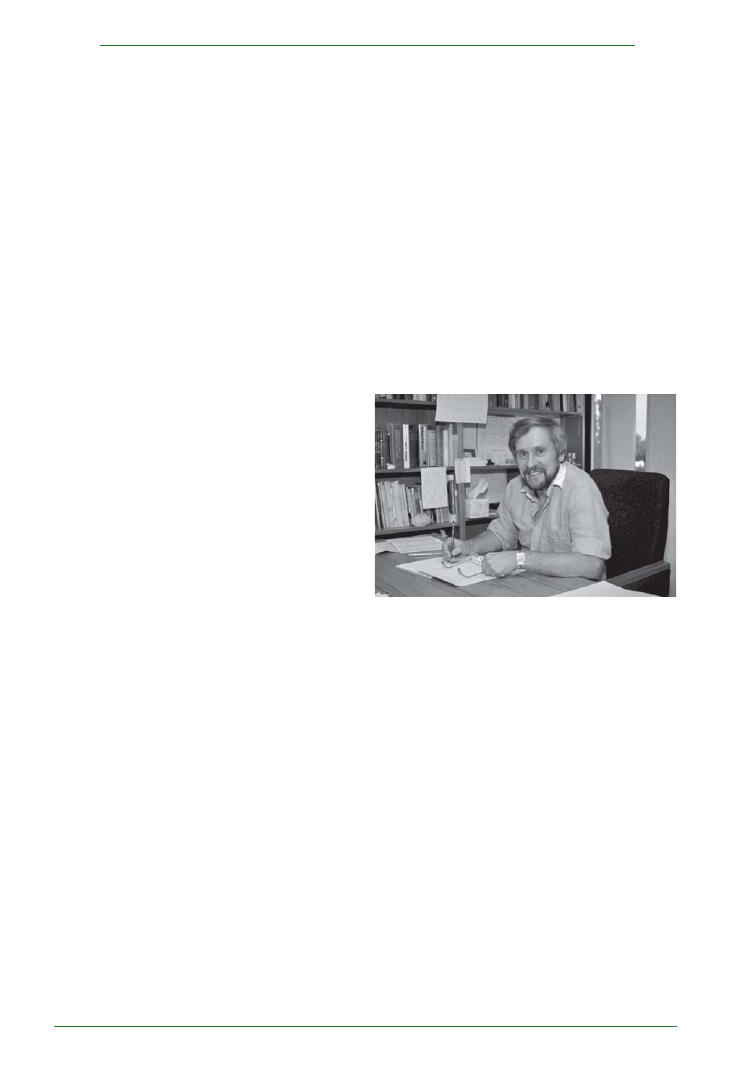
9 1
Plant Science Bulletin 52(3) 2006
Lloyd, David 1938 -2006
The University of Canterbury is mourning the death
of one of its most pre-eminent academics, Emeritus
Professor David Lloyd who was a corresponding
member of the Botanical Society of America.
Professor Lloyd, who had suffered ill health and
multiple disabilities for a number of years, died this
morning at the age of 68.
UC Vice-Chancellor, Professor Roy Sharp, says
Professor Lloyd was one of the finest researchers
the University has seen.
“That was reflected in 1992 when David became
just the seventh resident New Zealander to be
elected a Fellow of the Royal Society of London, one
of the world’s oldest and most prestigious scientific
societies.
“You just need to look at the citation that
accompanied the announcement of his fellowship.
It said his exceptional knowledge of the flora of New
Zealand had led him to conclusions that transformed
the thinking of plant scientists around the world.”
The citation’s sentiment is reflected in an upcoming
book by Professor Spencer Barrett (University of
Toronto) and Dr Lawrence Harder (University of
Calgary) who describe Professor Lloyd as a pre-
eminent plant evolutionary biologist of the modern
era.
“The extensive body of concepts that Lloyd developed
through keen observation, incisive intellect and
realistic theory established him as the founder of
the theory of plant reproduction and comprise his
enduring legacy,” they write.
“Lloyd pioneered the concept of plant gender and
was the foremost authority of the evolution of plant
sexual systems.
“Lloyd’s scholarly work laid the foundation for much
of today’s research on the ecology and evolution of
flowers, as well as several other fields of
evolutionary biology.”
David Lloyd began study at the University of
Canterbury in 1955 and graduated in 1959 with a
BSc Honours degree, with first class honours in
botany. He was the first graduate from any New
Zealand university to gain first class honours in a
BSc Honours degree.
He then studied at Harvard University on a Frank
Knox Fellowship and graduated with a PhD in
biology in 1964.
Three years later he was appointed a lecturer at
Canterbury University. In 1971 he was promoted to
senior lecturer, going on to become a reader in
1975 and professor of plant science in 1986.
David Lloyd grew up in the small South Taranaki
town of Manaia .
His brother, Trevor Lloyd, says David was tenacious
and determined from an early age.
“At secondary school in New Plymouth where he
was a boarder David was an outstanding athlete
and rugby football player despite having a less than
average-sized physique. David played on the wing
where he could best use his speed.
“In athletics he excelled in the 100 and 220 yard
sprints and the long jump. This was just another
expression of his determination and tenacity.”
David’s twin brother Peter, an emeritus professor of
economics at Melbourne University, remembers
his brother’s thirst for knowledge.
“As we grew up together, he had a great curiosity
about the world around him. He developed a deep
interest in the plant world and wanted to add to our
Emeritus Professor David Lloyd pictured in 1992 when he
was elected a Fellow of the Royal Society of London.
Erickson, R. O. 1976. Modeling of plant growth. Annual
Review of Plant Physiology. 27: 407-34
Erickson, R. O. 1983. The geometry of phyllotaxis. pp. 53-
88. In The Growth and Functioning of Leaves. Dale, J. E.
and F. L. Milthorpe (eds). Cambridge University Press.
Erickson, R. O. 1995. Growth and Development of a
Botanist. In Excitement and Fascination of Science:
Reflections by Eminent Scientists. Volume 4.
- Roger Meicenheimer and Wendy Kuhn Silk

9 2
Plant Science Bulletin 52(3) 2006
knowledge of it, always seeking to develop theories
to interpret his observations.”
Professor Lloyd is survived by his wife Linda
Newstrom-Lloyd and his three adult children -
Steven, Nicola and Paul.
Mrs Newstrom-Lloyd says aside from being an
extraordinary scientist with many benchmark papers
in evolutionary ecology and plant reproductive
biology, her husband was a unique person with a
pragmatic approach to life.
“David lived the past 13 years with cheerfulness and
resiliency. In spite of his difficulties as a result of his
injuries, he always made the most of what he had.
“We loved each other immensely and shared the
belief that no matter what happens, the most
important thing is how you approach it and what you
do about it.”
Mrs Newstrom-Lloyd pays tribute to the medical
personnel who cared for her husband over the past
13 years and thanks ACC for its assistance.
“David and I truly appreciated the expertise of the
people caring for him at home. They all succeeded
together as an exceptional team. I am extremely
grateful for their dedication, understanding, and
generosity.”
Professor Lloyd’s daughter, Nicola, says it was their
father’s botanical passion that introduced them to
the world of science.
“We have memories from an early age of the
combined family holiday with field research, of sitting
in bogs looking for obscure plants.
“Through his work we had the opportunity to travel
and experience life and living in other countries.”
Professor Lloyd’s son Steven says his father’s
scientific outlook was mixed with a profound
humanist spirit.
“His firm belief in equality, tolerance and capacity for
difference in the wider cultural, political and social
spheres, enriched us all. His non-judgemental
approach gave us independence to grow and
develop.
“David encouraged us to pursue our own passions.
He always took a great deal of interest in what we
were doing, embraced his grandchildren, and in
turn wanted to learn from our experiences.”
Paul Lloyd says his father was an active parent who
made a tremendous impact on their lives.
“He opened our eyes to the world. Through him we
saw things and had experiences that shaped our
thoughts and views. Most of all David provided us
with his unconditional love. And, we loved him
deeply.”
- Jeanette Colman, University of Canterbury
Daphne J. Osborne, 1930 - 2006
A major loss to plant science was the passing of
Daphne Osborne, in Oxford, England in June, 2006.
A dynamic contributor to developmental and
physiological botany, an international leader in
plant science, Daphne had a high talent for scientific
pursuit combined with a delightful capability for
communication.
Daphne was trained in botany, microbiology, and
plant physiology at the University of London, followed
by a postdoctoral appointment at Cal Tech. She
spent most of her professional life at Oxford
University, initially in the Agricultural Research
Council, later in the Agricultural and Food Research
Council at Oxford, and then with the Open University
of Oxford. During her career, she had visiting
fellowships at Cal Tech, Princeton, Canberra, and
UC Davis. She was awarded visiting professorships
at Hebrew University, Cornell, Calcutta and Natal.
She was awarded honorary D.Sc. degrees from
Natal and from Oxford, and the S.M. Sircar Gold
Medal at Calcutta. She was a Leverhulme Scholar,
a May Baker Research Fellow, a Rose Sedgwick
Scholar, a Fullbright Scholar, a University of London
Traveling Scholar, and a Lady Davis Visiting
Professor. She was a Corresponding Member of
the Botanical Society of America.
To illustrate Daphne’s international stature as a
plant scientist, she served invitation Lectureships
or Visiting Professorships in Europe (Cambridge,
Lausanne), in the United States (Princeton, Cal
Tech, UC Davis, UC Santa Cruz. UW St Louis, U
Mass Amherst, Michigan State, Ohio, Cornell), in
Canada (Regina, Alberta, Edmonton), and South
America (Buenos Aires), in Africa (Nigeria), in the
Far East (Calcutta, New Delhi, Tirupati, Ceylon,
Indonesia, Malasia, Hong Kong, Singapore, Cairo,
Osaka), in Israel (Negev, Haifa), and in Australia
(Adelaide, Monash, Brisbane, Flinders, Canberra).
She also served as a Visiting Professor in China
where she lectured in four major universities. I am
sure that there were more international invitations,
but these are the ones that I know of. Lectures at
national meetings or conferences are not included
in this list.

9 3
Plant Science Bulletin 52(3) 2006
A reason for so much international acclaim was
surely her wonderful intellectual style, combined
with her proclivity for remarkable and perceptive
experimental findings. In her early years Daphne
worked mainly on the plant hormones. She then
turned more to developmental events, and then to
genetic systems in plant development. Seeking
always to understand developmental regulation, it
is not surprising that she developed a new concept,
namely target cells as mediators of development.
These are cells that become sensitized to respond
to autonomous regulatory signals. They were the
central focus of her book, published last year with
M. T. McManus, titled “Hormones, Signals and
Target Cells and Plant Development”.
Daphne was always an exciting and provocative
source of inventive experiments. It is no wonder that
she was so sought after, and will be so missed in
the plant sciences.
- A. Carl Leopold, Boyce Thompson Institute of
Plant Research, Cornell University
Personalia
Anitra Thorhaug UN Who’s Who of
Women and the Environment
Professor Anitra Thorhaug is a scientist and
advocate for restoring the earth who has influenced
the protection of marine and coastal shallow-water
habitats in the Americas, Asia, Africa and several
island nations.
Professor Thorhaug has elucidated toxic levels of
pollutants through field and laboratory
experimentation and helped nations around the
world to set scientific standards to eliminate a
series of pollutants. She invented the first large-
scale seagrass restoration process in the early
1970s to combat habitat pollution effects.
Having organized the first saltwater bay restoration
effort in the world for Biscayne Bay, in Florida, she
taught the methods to many nations as well the
coastal zone management principals of restoration.
She taught science, policy, long-term planning and
advocacy of coastal protection of living resources to
nations in Africa, the Americas, and Asia and the
Pacific.
Professor Thorhaug’s academic career includes
faculty positions in leading Universities in the USA
(Berkeley, Yale, University of Miami, and Florida
International University). Currently, she is
researching remote sensing of coastal tropical
pollution at Yale, and serves as Chair of Physiology
of the Botanical Society of America, President of
the USA Club of Rome, and is a member of the
International Club of Rome.
She is author of 10 scientific books plus hundreds
of scientific papers. She has led scientific
exchange delegations to Asia, Africa and the
former USSR. Her work has focused attention on
series of critical issues: for example, on thermal
and salinity pollution, heavy metals and
radioactivity contamination, oil spill clean-up,
pollution in specific nations, and on “The Future
of the American Hemisphere”.
Her consulting career includes United Nations
Agencies (UNEP, FAO, IOC, UNDP), many
national governments, and industry, where she
has been influential in alleviating pollution as
well as protecting and restoring near-shore
resources.
Professor Thorhaug remains active in the
restoration of coastal ecosystems. She planted
a very large seagrass meadow in the Laguna
Madre in Texas, the only bay shared by developed
and developing nations. 75 acres have been
sucessfully planted. She has also begun planting
corals on sand where they have been killed.
She has planted a great many marshes,
mangroves, and seagrasses in the heavily used,
but damaged Florida Parks, and was on the
Florida Governor’s advisory committee to
examine the effects of the restoration of the
everglades in Florida on bays, particularly
Biscayne Bay. This was almost a year’s work
with intense public debate between agencies
doing the planning of various parts. It was a 25-
year-later add-on to her book Biscayne Bay Past,
Present and Future. Biscayne Bay was the first
major bay in the USA to have a complete intensive
examination by scientists, government and
citizens followed a plan of action.
Bobbi Angell, Botanical
Illustrator, receives Jill Smythies
Award
Ms. Bobbi Angell received the 2006 Jill Smythies
Award of the Linnean Society of London at their
annual meeting held on 24 May. The judges
unanimously chose Bobbi from this year’s field
of several strong candidates. She is the first
American to be so honored.
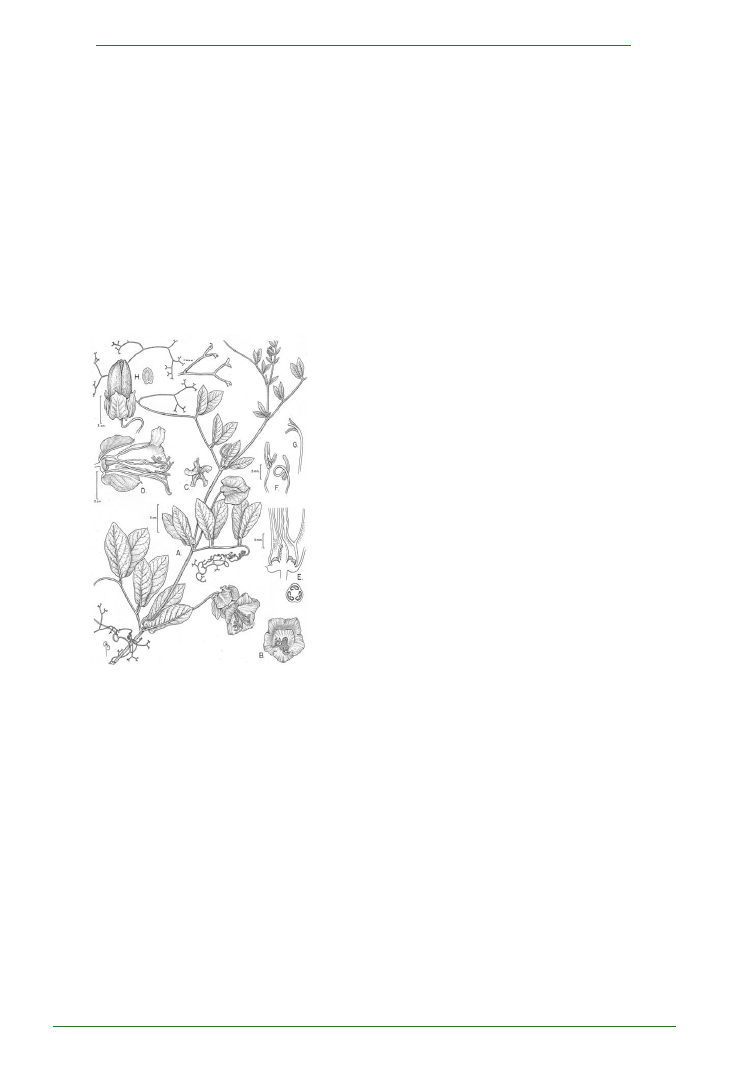
9 4
Plant Science Bulletin 52(3) 2006
Award Opportunities
American Philosophical Society,
RESEARCH PROGRAMS
All information and forms for all of the Society’s programs
can be downloaded from our website,
http://
www.amphilsoc.org
. Click on the “Fellowships and
Research Grants” tab at the top of the homepage.
New this year:
1.
It is now possible to submit applications
electronically to the Franklin, Lewis and Clark, Phillips, and
Sabbatical programs.
2.
The Lewis and Clark Fund for Exploration
and Field Research in Astrobiology is accepting
applications. The American Philosophical Society and the
NASA Astrobiology Institute have partnered to promote
the continued exploration of the world around us through
a new program of research grants in support of
astrobiological field studies undertaken by graduate
students and by post-doctoral and junior scientists and
scholars. Grants will depend on travel costs but will
ordinarily be in the range of several hundred dollars to
about $5,000.
3.
Sabbatical Fellowship applicants should have
received the Ph.D. no later than 1999 and no earlier than
1986. The last financially supported leave should not have
been subsequent to September 1, 2004. Writing samples
are mandatory.
This Award was established in 1988 by the late Mr.
Bill Smythies Hon FLS in honor of his wife Florence
Mary Smythies (“Jill”) whose career as a botanical
artist was cut short by an accident to her right hand.
The rubric states that the award “is for published
illustrations, such as drawings or paintings, in aid
of plant identification, with the emphasis on botanical
accuracy and the accurate portrayal of diagnostic
characteristics.”
Bobbi received a bachelor’s degree in botany from
the University of Vermont in 1977 and began her
career as a botanical illustrator at The New York
Botanical Garden the following year. Her first project
was creating illustrations for the multi-volume
Intermountain Flora under the direction of Dr. Noel
Holmgren.
Over the last 25 years, her illustrations have reached
a broad popular audience through the New York
Times weekly gardening column, two books based
on different compilations of these columns, and
notecards with water-color portraits of endangered
species sold by the Center for Plant Conservation.
Her primary focus, however, has been to illustrate
scholarly works with pen and ink drawings. Her
botanical training, keen observational skills, and
artistic sensibility result in illustrations that are not
only scientifically accurate but also beautifully
composed, even when they are reconstructions of
flattened dried specimens. The clarity of the
microscopic details that usually escape the naked
eye are a boon for identification. Many people go
directly to illustrations rather than to keys and
descriptions, and those who use a flora illustrated
by Bobbi find that a picture truly is worth a thousand
words.
Publications illustrated completely or mostly with
her drawings are: Intermountain Flora, Vols. 2B,
3A, 3B (Holmgren et al. 2005, Cronquist et al.
1997, Barneby 1989), Vines and Climbing Plants
of Puerto Rico and the Virgin Islands (Acevedo-
Rodriguez 2005), Flora of St. John (Acevedo-
Rodriguez 1996), Guide to Vascular Plants of
Central French Guiana, Part 2: Dicotyledons (Mori
et al. 2002), Flowering Plants of the Neotropics
(Smith et al. 2003), and the Flora Neotropica
Monograph of Meliococceae (Sapindaceae)
(Acevedo-Rodriguez 2003). Each of these books
is worth contemplating for the pleasure of the
illustrations alone.
She has drawn more than 2400 plant species,
including c. 1000 neotropical ones. Admiring
taxonomists have named three species in her
honor: Potentilla angelliae N. H. Holmgren, Mezia
angelica W. R. Anderson, and Macrocarpaea
angelliae J. R. Grant & Struwe. Unaware of the
authors’ intentions, Bobbi illustrated each.
Cobaea scandens Cav., published in Flowering Plants
of the Neotropics (Nathan Smith et al.)
see also p 103

9 5
Plant Science Bulletin 52(3) 2006
Symposia, Conferences, Meetings
“50 Years of the Phytochemical
Society of Europe” conference
Conference title:
50 Years of the Phytochemical Society of Europe
Highlights in the Evolution of Phytochemistry
Dates:
11 – 14 April, 2007
Abstract submission deadline:
27 October 2006
Location:
Churchill College, Cambridge, UK
Website:
www.pse50.com
Organiser:
Phytochemical Society of Europe
Sponsor:
Elsevier, publisher of the journal Phytochemistry
Secretariat:
Phillipa Fletcher, PSE50 Conference Secretariat, Bregor,
Winter Lane, West Hanney, Nr. Wantage, Oxon OX12 0LF,
UK
Tel: +44 (0) 1235 868811
Fax: +44 (0) 1235 227322
Email:
phillipa.fletcher@dsl.pipex.com
INFORMATION about ALL PROGRAMS
Purpose, scope
Awards are made for non-commercial research only. The
Society makes no grants for academic study or classroom
presentation, for travel to conferences, for non-scholarly
projects, for assistance with translation, or for the
preparation of materials for use by students. The Society
does not pay overhead or indirect costs to any institution
or costs of publication.
Eligibility
Applicants may be residents of the United States or
American citizens resident abroad. Foreign nationals
whose research can only be carried out in the United
States are eligible. Grants are made to individuals; institutions
are not eligible to apply. Requirements for each program
vary.
Tax information
Grants and fellowships are taxable income, but the Society
is not required to report payments. It is recommended that
grant and fellowship recipients discuss their reporting
obligations with their tax advisors.
Contact information
Questions concerning the FRANKLIN, LEWIS AND CLARK,
PHILLIPS, and SABBATICAL programs should be directed
to Linda Musumeci, Research Administrator, at
LMusumeci@amphilsoc.org
or 215-440-3429.
Questions concerning the LIBRARY RESIDENT Research
Fellowships should be directed to J. J. Ahern, Assistant
Manager of Technical Services and Programs, at
jjahern@amphilsoc.org
or 215-440-3443.
BRIEF INFORMATION about INDIVIDUAL PROGRAMS
Franklin Research Grants
Scope
This is a program of small grants to scholars intended to
support the cost of research leading to publication in all
areas of knowledge. The Franklin program is particularly
designed to help meet the cost of travel to libraries and
archives for research purposes; the purchase of microfilm,
photocopies or equivalent research materials; the costs
associated with fieldwork; or laboratory research
expenses.
Eligibility
Applicants are expected to have a doctorate or to have
published work of doctoral character and quality. Pre-
doctoral graduate students are not eligible, but the Society
is especially interested in supporting the work of young
scholars who have recently received the doctorate.
Award
From $1,000 to $6,000.
Deadlines
October 1, December 1; notification in February and April.
Lewis and Clark Fund for Exploration and Field
Research
Scope
The Lewis and Clark Fund encourages exploratory field
studies for the collection of specimens and data and to
provide the imaginative stimulus that accompanies direct
observation. Applications are invited from disciplines with
a large dependence on field studies, such as archeology,
anthropology, astrobiology and space science, biology,
ecology, geography, geology, linguistics, and paleontology,
but grants will not be restricted to these fields.
Eligibility
Grants will be available to doctoral who wish to participate
in field studies for their dissertations or for other purposes.
Master’s candidates and undergraduates are not eligible.
Award
Grants will depend on travel costs but will ordinarily be in
the range of several hundred dollars to about $5,000.
Deadline
March 15; notification in June.
Linda Musumeci
Research Administrator
American Philosophical Society
104 S. Fifth Street
Philadelphia, PA 19106-3387
215-440-3429
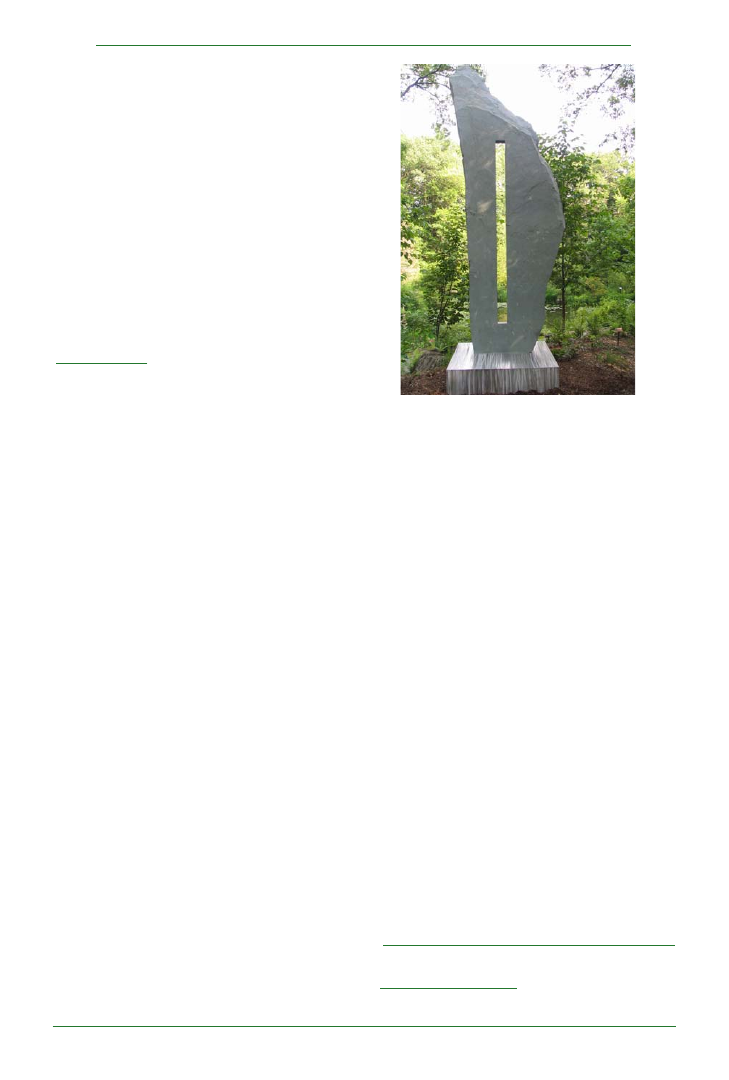
9 6
Plant Science Bulletin 52(3) 2006
Help Wanted – Ancient Trees Website
I am building a website, which will focus on the ancient
trees of the Americas. The Woodland Trust in the UK
states: “The term ancient tree is one that is not capable of
precise definition but it encompasses trees defined by
three guiding principles:
·trees of interest biologically, aesthetically or culturally
because of their age
·trees in the ancient stage of their life
·trees that are old relative to others of the same species”
Ancient trees are known from Canada, the United States,
Mexico and Brazil, among other countries in the Americas
and often elicit considerable interest from the public. This
interest can be used to help conserve individual trees such
as the Árbol del Tule in Oaxaca, Mexico and tracts of land
such as the Sequoia National Forest in California. My aim
is to make the website a clearing house for information on
ancient trees: ecology, conservation, culture/history,
education etc. I am currently looking for contributions in the
form of short articles, photographs, artwork etc. This will
be a sister site to the UK Ancient Tree Forum:
http://www.woodland-trust.org.uk/ancient-tree-forum/
For further information, please contact Chris Briand
(
chbriand@salisbury.edu
), Department of Biological
Sciences, Salisbury University, Salisbury MD 21801.
Other
ROCK ON! Celebrating Stone in the
Garden – the ultimate art and nature
event of Autumn, 2006
ART IN NATURE EXHIBIT - ‘ROCK ON!
Celebrating Stone in the Garden.’ New England
Wild Flower Society’s Garden in the Woods features
37 stone sculptures by top New England artists in
a glorious 45-acre garden setting now through
October 15. Sculptural and environmental works
by Curtis, Hoffman, Kuyper, Mazur, Phillips, Rudnicki,
Stanley, and Wheelwright surrounded by 1,500
wildflower species and cultivars on garden trails
and in natural areas. Fruits, foliage, and berries
highlight the season. Make your own sculptures at
the interactive mini-sculpture park. RAIN OR SHINE.
Special events run throughout the show, check
www.newfs.org
for schedule. The show is included
FREE with admission. New England Wild Flower
Society’s Garden in the Woods, 180 Hemenway
Road, Framingham, MA. (508) 877-7630. 1,500
native plant species on display including 200 rare
and endangered species.
SPECIAL ROCK ON EVENTS
September 16-17 - ROCK ON! ROCK FEST 12-4
Bring your instruments and have a ROCK JAM with
kids of all ages. Whether you are a ROCK musician
or play acoustically, come raise up your sound at the
New England Wild Flower Society. Walk the ROCK
ON trail, take a ROCK scavenger hunt, and meet
‘GRANNY GRANITE’ a costumed rock with lots of
stories. Make a MINI-ROCK GARDEN to take home
and learn about STONE in the HOME LANDSCAPE.
Fall is a great time to plant trees and shrubs-take
some home for planting now for winter interest.
Make your own ROCK ART at the sculpture mini-
park and ROCK ON!
October 15 - ROCK ON! FALL FAMILY FESTIVAL IS
FREE 12-4 Join us for a grand farewell to ROCK ON!
Take a fall scavenger hunt, say goodbye to GRANNY
GRANITE, and discover treasures in the fall garden.
Make your last pieces in the ROCK ON interactive
sculpture mini-park. Now is a great time to select
your nature programs for the year from the New
England Wild Flower Society Fall/Winter course
catalog to stay in touch with nature and the outdoors
throughout the seasons.
Credit: New England Wild Flower Society/Tom Smarr
Caption: “Portal” by Chris Curtis at ROCK ON! calls
our attention to the natural world-and space
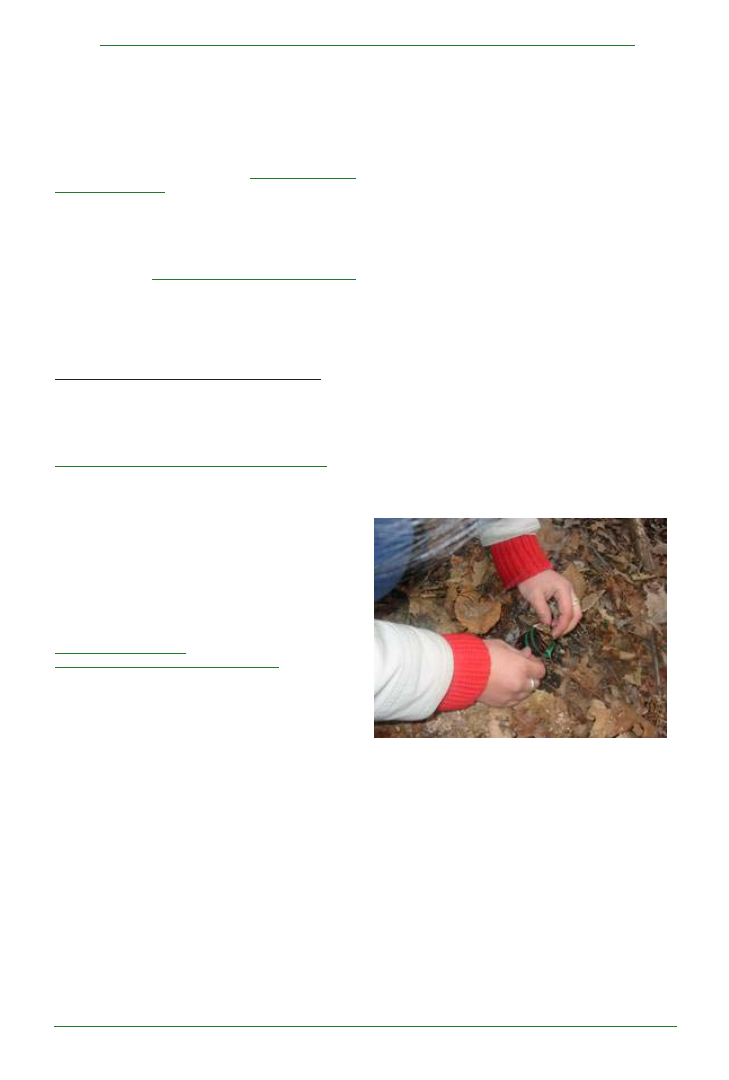
9 7
Plant Science Bulletin 52(3) 2006
Some Biogeography and Biography
on the Web
Below are several (noncommercial) educational websites
developed by Dr. Charles Smith that fall generally within the
realm of biogeography.
The Alfred Russel Wallace Page
http://www.wku.edu/
~smithch/index1.htm
Materials on and by the English
naturalist and social critic (1823-1913), including
bibliographies, lists, commentaries, a biography, and the
full-text of hundreds of his writings.
Early Classics in Biogeography, Distribution, and Diversity
Studies: To 1950
http://www.wku.edu/~smithch/biogeog/
An enhanced bibliography of historical sources in
biogeography and related fields, with links to biographical
information and the full-text of many of the sources listed.
Early Classics in Biogeography, Distribution, and Diversity
Studies: 1951-1975
http://www.wku.edu/~smithch/biogeog/index2.htm A
continuation of the preceding site covering the literature
from 1951 to 1975.
Some Biogeographers, Evolutionists and Ecologists:
Chrono-Biographical Sketches
http://www.wku.edu/~smithch/chronob/homelist.htm
A
collection of over 250 short biographical sketches of the
main figures in the history of biogeography and related
fields, sorted by name, nationality, and subject.
All of these items have had OCLC WorldCat records
established for them, so notice of their existence could
also easily be added to any institution’s electronic catalog
of holdings.
Contributed by:
Charles H. Smith, Ph.D., Professor of Library Public Services,
Western Kentucky University*
charles.smith@wku.edu
http://www.wku.edu/~smithch/index.html
Brooklyn Botanic Garden Science
Research Interns Win Grand Prize
in National Science Research
Contest
Brooklyn, NY—July 7, 2006—Brooklyn Botanic Garden
science research interns, Shadae Dixon and Thinlay
Dolma, juniors at Brooklyn Academy of Science and the
Environment (BASE), won first prize in the high-school age
bracket and grand prize overall from iScienceProject, a
national science competition established to involve students
(K-12) and teachers in projects that stimulate interest in
science. The students captured the coveted grand prize
title for their project titled “Thermogenic Temperature
Measurements of Skunk Cabbage (Symplocarpus
foetidus) Spadicies and Magnolia (Magnolia x loebneri
‘Merrill’) Flowers. Ms. Dixon and Ms. Dolma are enrolled
in a new program at BBG that allows high school students
to work with scientists from the Garden on challenging
research projects.
The objective of their study was to determine if skunk
cabbage and magnolia trees in North America are
thermogenic (i.e. produce their own heat), and—if they
are thermogenic—to study the heating pattern. The
students hypothesized that these plants are thermogenic,
in order to help volatize and disperse odors to attract
pollinators, and also as protection from frost. Using very
fine and sensitive temperature sensors to measure the
floral temperature of the two plants thought to be
thermogenic, Ms. Dixon and Ms. Dolma recorded
temperature measurements of a skunk cabbage
(Symplocarpus Foetidusi) and magnolia (Magnolia x
loebneri ‘Merrill’) at Brooklyn Botanic Garden.
Their results indicated that the skunk cabbage did produce
heat, and they found that the female inflorescences of the
skunk cabbage produced more heat than the male. The
results of the magnolia flower study showed no difference
between the ambient air and the temperature of the flower.
The students theorized that no heat was detected either
because the magnolia they studied is a temperate, hybrid
species that does not produce heat, or its flowers were
not at the female stage, during which most heat is produced.
In addition, due to climate variation over the study, cold
weather and snow may have also affected the flowers.
Both Ms. Dixon and Ms. Dolma hope to enter pre-medicine
programs in college after graduating from Brooklyn
Academy of Science and the Environment. Launched in
September 2003, BASE is a New Century High School
developed by Brooklyn Botanic Garden and Prospect
Park Alliance in collaboration with New York City
Department of Education and New Visions for Public
Schools. BASE was developed to take full advantage of
the extensive natural and educational resources of BBG
and PPA.
Shadae Dixon and Thinlay Dolma set up data loggers in the
Native Flora Garden at Brooklyn Botanic Garden.

9 8
Plant Science Bulletin 52(3) 2006
An Introduction to Plant Structure and
Development. Beck, Charles B. 2005. ISBN 0-521-
83704-5 (Cloth US$55.55) 431 pp. Cambridge
University Press, 40 West 20
th
Street, New York, NY
10011-4211.
“My objective has been to prepare a new plant
anatomy textbook for a new century, incorporating
the best research in the most active and significant
areas with the widely accepted common knowledge
that provides the foundation of the field. Only you the
readers can decide if I have succeeded.” It is this
readers judgment that Beck has produced the
legitimate successor to the “the little Esau (1977)”
for use in undergraduate plant anatomy courses.
His text is a very readable treatment of
developmental plant anatomy that highlights the
excitement of the field today.
A particular strength of this text is that it identifies
current controversy, and presents counter
arguments from different schools of thought,
Books Reviewed
Developmental and Structural
An Introduction to Plant Structure and Development. Beck, Charles B - Marshall Sundberg.............98
Ecological
The Geographic Mosaic Theory of Coevolution. John N. Thompson. - Root Gorelick.........................100
Economic Botany
Crop Ferality and Volunteerism. Gressel, Jonathan, ed - Dorothea Bedigian........................................101
Education
Demons in Eden: The Paradox of Plant Diversity. Silvertown, Jonathan.- Marshall Sundberg..........102
Historical
Gardens of New Spain, How Mediterranean Plants and Foods Changed America. Dunmire,
William D. -Sara Sundberg.............................................................................................................................102
Inspiration and Translation:Botanical and Horticultural Lithographs of Joseph Prestele and Sons.
White, James J., Jugene B. Bruno and Susan H. Fugate. - Linda Jennings............................................103
Systematic
Vanishing Beauty. Native Costa Rican Orchids. Vol. 1. Acianthera-Kegeliella. F. Pupulin and
collaborators - Joseph Arditti......................................................................................................................................105
Wild Orchids of Thailand. 4
th
and Expanded Edition. Nantiya Vaddhanaphuti.- Tim Wing Yam and Joseph
Arditti.............................................................................................................................................................................105

9 9
Plant Science Bulletin 52(3) 2006
documenting these issues with an extensive list of
references and further readings at the end of each
chapter. All of the major secondary sources are
cited, but the end-of-chapter references are mostly
to current primary literature. For instance, chapter
two begins by contrasting two perspectives on the
origin of multicellularity. The organismal theory,
championed by Kaplan and Hagemann (1991) is
posited as an alternative to the traditional cellular
theory of the development of plant multicellularity.
The significance of the presence or absence of
plasmodesmata and the extent of the symplast is
stressed throughout the book.
A second area of interesting debate occurs in the
sections on transport mechanisms in both the
chapter on xylem and the phloem chapter. We are
all familiar with the cohesion-tension theory of
water movement, but what about Canny’s (2001)
compensating pressure theory? And what kind of
support (no pun intended) does xylem anatomy
provide to these competing views? In the phloem
we are all familiar with the pressure-flow hypothesis,
but what about Spanner’s(1974) electroosmosis
theory. Again, anatomy must be considered in
evaluating the merits of both. Of historical interest
is the discussion of “slime” and p-protein and the
controversy over how much, if any, of the latter is an
artifact of preparation.
Beck’s work, and that of his students, bridges the
span of extinct and extant vascular plants. He uses
this expertise to provide an evolutionary framework
to plant structure and development. While the main
focus of the book is on flowering plants, and
gymnosperms to a lesser degree, Beck does not
ignore the ferns and fern allies, and their fossil
forms, where they can provide clarity to the story he
tells. I found myself making notes to refer back to
the next time I teach plant kingdom.
Of course much of the excitement and many of the
significant discoveries in modern plant anatomy
have to do with the cytockeleton and molecular
control of development. In each chapter current
research in the area, using modern techniques, is
summarized and integrated into the classical
descriptive anatomy. Again, the extensive citations
of primary literature at the end of each chapter
illuminate the path for further study for those who
are interested.
The text is 100 pages shorter than Esau (1977) or
Mauseth (1988) and the format is single column, 2/
3 page width vs double column in both earlier
volumes. Beck does not provide the “coverage” of
either of these earlier works. There are not separate
chapters on cell types and simple tissues and
flowers, fruits, and seeds, the subjects of five
chapters in Esau and three in Mauseth, are covered
in a final chapter on reproduction and the origin of
the sporophyte. Beck acknowledges that some
“…subjects may not be as fully covered as some
teachers and researchers would desire…” but again,
the necessary literature is cited, particularly
secondary literature for these major areas. Beck
has done an admirable job of identifying the key
concepts underlying plant structure and
development and developing these concepts in
depth and clarity – a much more difficult and useful
task than simply providing encyclopedic information.
I did have some disappointments with the text.
While the quality of line drawings was excellent,
some photomicrographs were poorly reproduced
and/or illustrations were poorly labeled. For
instance, only one of the two contact parastichies
are indicated in Fig. 7.14 and fig. 7.5 will be difficult
to interpret, for those not familiar with representing
sympodial branching of stem vasculature in a single
plane, because the corresponding sectional
diagrams include separated leaves containing a
bundle that are not the bundle-containing leaf bases
indicated by a triangle in the plane view. While most
technical terms were bold faced the first time used,
and there is an extensive glossary, occasionally
terms were not defined, eg., versiculate (pp 43 and
146). Finally, a personal peave. Why is “provascular
tissue” consistently substituted (with one exception)
for “procambium” throughout the text?
The obvious audience for this book is undergraduate
students of plant structure and development. It will
provide them with the basic background of traditional
descriptive anatomy yet excite them with the power
of the modern techniques currently being employed
in the field. The less obvious audience is any
professional botanist trained a dozen or more years
ago who is responsible for teaching introductory
botany. So much is changing and much of it is
summarized in Beck’s book!
-Marshall D. Sundberg, Department of Biology,
Emporia State University, Emporia, KS 66801
References Cited
Canny, M.J. 2001. Contributions to the debate on
water transport. Am. J. Bot. 88:43-46.
Esau, Katherine. 1977. Anatomy of Seed Plants, 2
nd
ed. New York: John Wiley and Sons.
Mauseth, James D. 1988. Plant Anatomy. Menlo
Park, CA: The Benjamin/Cummings Publishing
Company.
Spanner, D.C. 1974. The electro-osmotic theory. In
S. Arnoff et al., eds., Phloem Transport, NATO
Advanced Study Institute, Series A-4. New York:
Plenum Press, pp. 563-584.

100
Plant Science Bulletin 52(3) 2006
The Geographic Mosaic Theory of Coevolution.
John N. Thompson. 2005. Cloth $75.00 (ISBN 0-
226-79761-9); Paper $28.00 (ISBN 0-226-79762-
7). 400 pages. University of Chicago Press.
John Thompson has provided an updated version
of his sensible theory on coevolution. He intentionally
only covers new ground since his previous books
(1982, 1994). All three volumes are necessary
reading for anybody interested in coevolution.
His latest book is incredibly detailed. He reviews a
myriad of empirical studies on coevolutionary
processes amongst populations. This includes
reproduction of the data graphics from many seminal
works, especially Craig Benkman’s work on
interactions between crossbills, conifers, and red
squirrels, and the Brodies’ work on garter snakes
and Taricha newts. In many ways, Thompson’s
latest book is reminiscent of Mary Jane West-
Eberhard’s magnum opus Evolutionary
Developmental Plasticity, except that Thompson is
not quite so exhaustive, especially in his index.
Thompson demonstrates expertise and interest in
all life forms, including plant-animal interactions.
Thus, we see his own botanical work. Thompson
takes particular pains in laying out many testable
hypotheses arising from his geographic mosaic
theory of coevolution, thereby providing research
ideas for an entire generation of empirical biologists.
This book also shines in presenting gorgeous
theoretical work supporting the geographic mosaic
theory of coevolution, theory developed by his
Pullman/Moscow colleagues Dick Gomulkiewicz
and Scott Nuismer. The marriage of theory and
detailed empirical work is wonderful.
One peculiarity of this book is that the concise one-
sentence summary of the book’s topic apparently
does not appear until chapter six, i.e. a quarter of the
way through the book. At this juncture, we learn that
the geographic mosaic theory of coevolution is
nothing more than the statement that evolution acts
on populations, and not species. This was the
classic Fisher-Wright debate of whether or not
populations are panmictic. Realizing the importance
of populations removed the typological view of
species from evolutionary biology. Yet, Thompson
is correct in pointing out that much work on
coevolution maintains the erroneous typological
view of the importance of species…as does much
work in macroevolution. His book goes far in
dispelling the anachronistic view that, in evolution,
species matter more than populations. He
persistently reminds us that evolution does not
equal speciation. He persistently reminds us that
evolution, including coevolution, can be rapid.
Evolution can and does occur on ecological time
scales. His geographic mosaic theory places
coevolution firmly within the purview of evolutionary
ecology.
Thompson is relentless is stating that coevolution
occurs at the population level. He points out that
individuals and populations are often not
generalists, even if the species appears to be. Say
that a given plant population is only be pollinated by
one or a few species of insect, yet different
populations of this plant species are pollinated by
different insects. Many biologists would have
deemed this plant species to be a generalist with
respect to pollination, and ignored the fact that each
population consists purely of specialists.
Analogously, it would be erroneous to say that
humans are generalists with respect to languages
because, world-wide, humans speak thousands of
languages. In fact, each population tends to be very
much of a specialist with respect to number of
languages spoken. The main message of this
book is that coevolution is very much a local
(population-level) ecological phenomenon. And, if
we are to understand coevolution, we must dig
down to the details of dynamics of many interacting
multi-species meta-communities.
I believe Thompson has primarily presented a
Wrightian view of coevolution (although, based on
pages 133-134 of his book, Thompson would
disagree with this assertion). If we envision evolution
as temporal changes in allele frequencies within a
population, then coevolution are the changes in the
joint distribution of allele frequencies across
populations across both space and time. This can
be thought of as a generalized from of epistasis,
where the interacting alleles are not confined to a
single individual, but can be between multiple
species. Alleles from other species form part of the
genetic background of a focal individual. Such a
generalized, multi-species view of epistasis
admittedly does not yet exist. There has been no
real theory developed to support this generalized
Wrightian view of coevolution. Yet, I suspect it is a
theoretical direction that will place coevolution firmly
within the modern neo-Darwinian framework.
The book ends with a chapter on humans, which
seems to be a modern publisher’s requirement for
all books on evolution. Compared with the rest of
the book, this is a relatively weak chapter. For
example, Thompson seems surprised at there
being a geographically large coevolutionary cold
spot between corn (Zea mays) and corn smut
(Ustilago maydis; huitlacoche) with human
cultivation. He implicitly assumes that humans
highly value corn and greatly deplore corn smut. Yet
many people in southern Mexico highly value both
organisms in their diet (Ruiz-Herrera & Martínez-

101
Plant Science Bulletin 52(3) 2006
Espinoza 1998 Internatl Microbiol). Thus humans
impose a geographic mosaic on the three-way
interaction between corn, corn smut, and humans.
But this is a minor complaint and the last chapter
can largely be ignored as window dressing.
Read this book. Savor the intricate details and
appreciate the marriage of nascent data with nascent
theory. If the devil is in the details, then this book will
certainly please.
- Root Gorelick,
Crop Ferality and Volunteerism. Gressel, Jonathan,
ed. 2005. ISBN 0-8493-2895-0 (Cloth US$ 169.95)
422pp. CRC Press, Taylor and Francis Group, 6000
Broken Sound Parkway, NW, Suite 300, Boca Raton,
FL. 33487-2742.
Crop Ferality and Volunteerism is a magnificent
original contribution concerning one of the
significant new botanical challenges of our age. A
workshop titled “Crop Ferality and Volunteerism: a
threat to Food Security in the Transgenic Era?”
sponsored by the OECD Cooperative Research
Program and hosted by the Rockefeller Foundation
Conference Center in Ballagio, Italy, from May 24-
28, 2004 formed the foundation for this book.
Growing public concerns due to the increasing
territory of commercial cultivation of transgenic
plants motivated the workshop’s subject.
The editor’s Foreword states that transgenic plants
were grown on more than 60 million hectares in
2004 and expected to increase in the future.
Volunteerism is well known in the daily practice of
agriculture, and ferality is usually neglected. Only
plant breeders are well aware of ferality due to their
experiences based on long-term selection efforts.
The phenomena of volunteerism and ferality have
to be considered in this transgenic era especially in
relation to gene flow. Since no one is performing
research related to ferality per se, the inquiry was
addressed by convening those world experts who
are most actively working in related fields. It was
anticipated that on the basis of their recent findings,
the scientific community would be able to find out
whether trangenics are different in this context from
normally cultivated crops.
As this information is otherwise unavailable in
depth, it was decided to collate the information into
a book. Accordingly, the logistical preparation was
exceptional: chapters in this book were peer-
reviewed prior to the workshop. The questions and
answers in the long discussions that followed every
presentation were recorded. Each author was given
the prerogative of either including the issues and
answers from the discussion directly as part of the
revised text or including them at the end of the
chapter in a separate section.
For the duration of my reading I had the flashback
of sitting at the Crop Evolution Laboratory’s
conference table having conversations with Jack R.
Harlan and J.M.J. de Wet and their numerous visitors.
This volume draws from those foundations. Suzanne
Warwick and C. Neal Stewart’s authoritative opening
chapter about three principal paths of weed evolution
is launched with a quote from Harlan and de Wet.
Titled Crops Come from Wild Plants – How
Domestication, Transgenes, and Linkage Together
Shape Ferality, it defines essential terminology - [1]
plant domestication [2] weediness and [3] ferality.
A table recognizes comparisons among the three
groups: crop, weed, and wild, by means of a series
of genetic traits. The characteristics of weediness
and domestication traits are explored thoroughly.
Each succeeding chapter describes those
phenomena probing our foremost food crops.
Since, during the discussions it became apparent
that there were other cases of ferality or instances
where ferality might become an issue, a special
chapter (15) was added by participants and/or was
commissioned after the workshop. This multi-
authored chapter, Issues of Ferality or Potential for
Ferality in Oats, Olives, the Vigna group, Ryegrass
species, Safflower and Sugarcane appends the
vast array of measures plants have used to evolve
ferality.
Contributors with exceptional credentials were
brought together to inform one another about the
world’s major crops and their wild and weedy
relatives. The result is both scholarly and
inspirational. The usual drawback of multi-authored
volumes is absent here, thanks to skillful editing
and extraordinary groundwork.
This book will appeal to a wide variety of readers.
Those interested in theoretical aspects of plant
domestication as well as persons with applied
interests e.g. assessing the environmental risks of
transgenic volunteer weeds, the potential economic
damage by feral crops, will profit from this book. I
find the contents extremely thought provoking as a
primer in consideration of my own monographic
revision of the genus Sesamum and its various
forms: crop, weed and wild.
The book is carefully edited, and each chapter is
comprehensive and well referenced. However, one
feature followed in this volume as with other CRC
publications, is the custom of placing sources cited
only by a number in (parentheses) (sic), without

102
Plant Science Bulletin 52(3) 2006
giving author name(s)! It is irksome to this reader,
who is unable to find out in context what the source
of information is without, each time, the additional
tedious, time-consuming step of searching for that
person responsible at the end of the chapter.
-Dorothea Bedigian
Missouri Botanical Garden, St. Louis.
Demons in Eden: The Paradox of Plant Diversity.
Silvertown, Jonathan. 2005. ISBN 0-226-75771-4
(Cloth US$25.00) 169 pp. The University of Chicago
Press, 1427 East 60th Street, Chicago, IL 60637-
2954.
How does plant diversity evolve and why does it
persist? What allows some plants to occasionally
escape their natural limitations and form new
species, thereby increasing diversity and what limits
the invasiveness of newly formed species, thus
decreasing diversity? These are the broad
questions Silvertown addresses in this deceivingly
small and thoroughly engaging volume. In less
than 150 pages of text, the author develops some
of the major ideas of contemporary plant ecology
and evolutionary biology, through personal narrative
and historical story telling. Each of the ten chapters
concentrates on one or two major concepts
illustrated by the plants of a specific locality and in
each case key figures, both historical and
contemporary, are introduced as their contributions
are highlighted. Such an interesting, enjoyable,
and educational read!
The story begins in the Princess of Wales
Conservatory at Kew Gardens. Ten different tropical
zones are represented that highlight the biodiversity
of earth, convergent evolution, and adaptation. The
author’s narration was a guided tour of the
glasshouse and I found myself recalling my visit
and wondering how many of the subtleties he was
describing did I notice at the time? If you’ve not been
there, the single plate provided matches part of the
word picture being painted by the author – almost
a slide show. This engaging style is used throughout
the book. If you’ve been to any of the locations
described by the author, his descriptions will elicit
memories - - if not, by the end of the chapter you’ll
feel like you’ve been there!
The purpose of the first chapter is to develop the
concept of natural selection and to raise an apparent
paradox. If natural selection favors those species
that leave the most progeny, “Darwinian demons,”
while the progeny of other species decline and
Gardens of New Spain, How Mediterranean Plants
and Foods Changed America. Dunmire, William D.
2004. ISBN 0-292-70564-6 (Paper US$24.95) 375p
University of Texas Press, P.O. Box 7819, Austin, TX
78713-7819
William W. Dunmire vividly recreates the colors,
tastes, and smells of ordinary life in colonial New
Spain as he describes the transmission and mixing
of food plants and food ways from old world Spain
into the vegetative and culinary new worlds of
Spanish colonial North America. The author sets
the stage for the development of gardens in New
Spain with rich descriptions of the plant life and food
eventually are lost, how can this generate diversity?
The rest of the book provides the answers,
particularly with those demons known as invasive
species.
What are some of the concepts explored and who
are some of the scientists highlighted? Let me
share just a few of my favorites. The work of Mark
Chase and his colleagues is used to explain
phylogenetics and the role of molecular biology in
understanding evolutionary history. Some of the
problems with the grand concept of island
biogeography are highlighted using the Canary
Islands. Steven Hubble, Dan Janzen and Joe
Connell, and the author provide alternative
hypotheses to explain how Barro Colorado Island
in the Panama Canal has virtually as many species
of native flowering plants as all of England – rare
species are favored. The Park Grass Experiment,
now running for more than 150 years, provides
evidence for the role of atmospheric nitrogen
pollution in the current loss of species diversity.
Finally, what is the threat from genetically modified
plants? “Will the Darwinian demons, held in check
for so long by nature’s laws, conquer at last through
human folly and indifference? They may, and in
places they already have; yet it is not too late for
action.”
Demons in Eden is an appropriate read for college
freshmen - - I will use it as one of my text-substitute
readings the next time I teach honors biology. It
would also be a good outline for an upper division/
graduate seminar in plant ecology or evolutionary
biology. The chapter-by-chapter general sources
and notes at the end of the book cite appropriate
primary literature, classic books, general sources
and web sites. This slim volume should be in every
biologists library!
-Marshall D. Sundberg, Department of Biological
Sciences, Emporia State University.
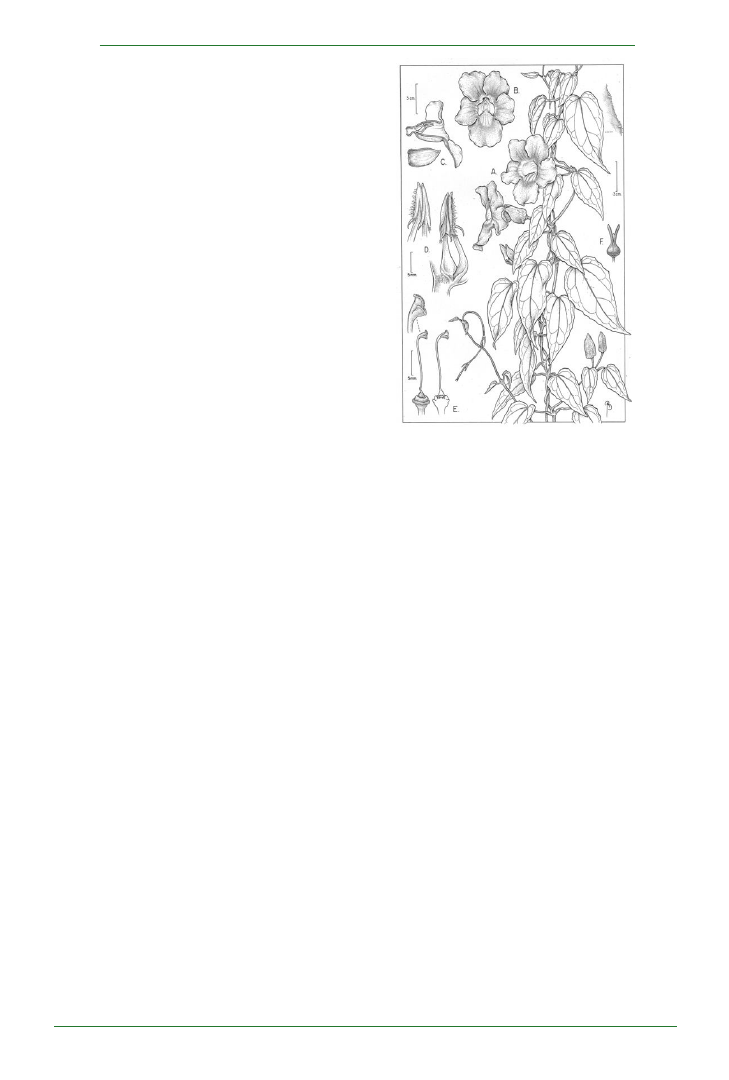
103
Plant Science Bulletin 52(3) 2006
Inspiration and Translation:Botanical and
Horticultural Lithographs of Joseph Prestele and
Sons. White, James J., Jugene B. Bruno and Susan
H. Fugate. 2005. ISBN 0-913196-80-0 (Paper
US$18.00) 84 pp Hunt Institute for Botanical
Documantation, Carnegie Mellon University, 5000
Forbes Avenue, Pittsburgh, PA 15213.
The Hunt Institute for Botanical Documentation and
the Special Collections of the National Agricultural
Library has done a great job of constructing this
book. The layout has details throughout, similar to
the Prestele botanical prints. This book shows off
the Prestele families amazing talents as artist and
more. Included are not only their prints but essays
giving the reader insight into their religious
community, the lithographic techniques they used
and the legacy the Prestele family has left to the
botanical community, along with many additional
essays that add so much to their story.
The book itself came about as a chance happening
to a Prestele descendent, Mrs. Marcelee Konish,
whose essay is also included in this book. Reading
a press release for an earlier Smithsonian Botanical
Art exhibition, Mrs. Konish approached the gallery,
telling of the 150 colored lithographs she inherited
culture of late fifteenth century Spain, Mexico and the
American southwest. He then follows the travels of
Spanish colonizers as they dispersed plants
throughout Spain’s North American colonies,
creating “European plantways,” through the
Caribbean into Mexico and, finally by the middle of
the eighteenth century, across the southern third of
what would become the United States.
The diffusion of the Mediterranean foods and tastes
of Spanish colonizers produced the possibility, for
example, of mixed gardens in semi-arid places like
New Mexico and Arizona that could feature figs,
melons, oranges, lettuce and anise alongside more
traditional indigenous crops like corn. Spanish
colonist and missionaries combined their
knowledge of Spanish acequias, or irrigation
ditches, with Indian canals to provide reliable
sources of water for their imported plants. It was, of
course, not just the gardens of New Spain that
brought culinary change but, also its pastures. The
author also explains the significant impact of the
introduction of European domesticated livestock
on the diets of the indigenous peoples of New
Spain.
New Spain was, indeed, a garden as Europeans
and Indians joined their plant and animal resources
and their technologies to produce a rich and
distinctive agriculture. Dunmire concludes his
narrative with stories about present-day inhabitants
in the Southwest to illustrate both the persistence
and blending of European and Indian and
agricultural and food cultures.
Dunmire is mindful that there is a less beneficial
side to the diffusion of plants and animals to America,
the introduction of weeds and new diseases and
overgrazing are just a few examples. That is not his
focus. Nor is it the author’s intent to discuss impact
of new world plants on old world Spanish agriculture.
Dunmire’s focus is “Mediterranean crop and food
connections” that developed in Spanish colonial
America. He provides extensive tables, diagrams
and maps illustrating when, where and by which
pathway foods arrived in America. All of this is
supplemented by a useful bibliography. The author’s
geographic emphasis is Mexico and what is, today,
the American southwest. Although historians of
California and the American southeast will be
disappointed that there is not more information
about these areas, the study is an important
reference source for the agricultural history of New
Spain. This study is also a welcome addition to the
social and cultural history of early North America as
it allows us to glimpse colonial and Native American
farmers at home in their gardens.
- Sara Sundberg, Central Missouri State University,
Warrensburg, MO 64093.
Thunbergia grandiflora Sims, (by Bobbie Angell)
published in Vines and Climbing Plants of
Puerto Rico and the Virgin Islands (Pedro Acevedo)

104
Plant Science Bulletin 52(3) 2006
from her grandfather, a great grandson of Prestele,
and viola, an exhibition was born. Obviously a lot of
time, interest and labor went into putting this
exhibition together to show the Prestele’s family art
work to the public. The curators were also able to
add so much more to the exhibition about the
Prestele’s family’s personal and professional life
which is so intrinsic to the history of early American
botanical work.
The story tells of how this new found collection
inspired an exhibition and how the collection details
were brought together. The curators have provided
the reader with an insight into the Prestele’s
community structure and religious beliefs, as well
as the relationship within the Prestele family.
Included is their connection to each other through
their craft of lithography and watercolors as it is
incorporated into scientific discovery and
documentation. The curators were able to describe
in detail about the different transactions during
projects, communication with illustrators, and
movement of the lithographic plates and prints.
They also included detailed records of which family
member did what task during the different
processes. Most importantly, the book shows off
the comprehensive reproductions of botanical
illustrations that truly capture the details of the
plants, leaving the botanical and horticulture
sciences with a legacy of information and
documentation on early discoveries of United States
plants.
The Prestele family of artists, worked on numerous
pieces for Asa Gray’s including Genera Florae
Americae (1848) and the Pacific Railway survey’s
(1855-1860) for the US Army. They also worked on
the prints for The Mexican boundary survey (1857-
1859), the Great Salt Lake expedition (1852), and as
well as for countless nurserymen like James Vick
of Rochester, who was the publisher of the
Horticulturist and a variety of well known botanical
illustrators. The curator were also able to share
some of the prints that were commissioned for early
scientific works but never published, such as Asa
Gray’s Forest Trees of North America Project (1849-
1859). Many other additional texts in the Prestele
collection, which add to this story, are shared in this
book such as the first letter to Asa Gray inquiring
about employment and a letter to the great botanical
illustrator Isaac Sprague
The curators were able to show how understanding
what makes a great collection is not just the individual
pieces, but the cross referencing to find the
connections in their relationships. This constructs
a more complete story of the Prestele’s impact on
how we see the natural world around us, and to look
more closely at the details we have chosen to use
to categorize these plants. The connections between
the pieces of the collection, like a picture of Joseph’s
ledger opened to John Torrey’s account has been
matched to one of the commissioned drawings,
including a pencil drawing by Joseph Prestele of
Aster bigelovii. There were also descriptions of the
lithograph technique and a wonderful picture of a
completed Acer rubrium, including a picture of the
lithographed stone with the final print, colored to
perfection by Joseph Prestele himself.
The Prestele’s had an amazing eye for detail, which
is another reason why this book is so well thought
out. The authors were able to include roughly half of
the exhibitions works into this small, compact book
(7x10, 82 pages). Included in the index are the
account books of clients for Joseph as well as one
of his sons, Gottlieb’s. An index of the exhibitions
catalogue, and where each piece is deposited, is
also included. The only criticism of this book is the
indexing of the prints in the book, which go by the
exhibition number system and not how they are laid
out in the book. It would also be a nice addition to
have included the literature cited.
Just about anyone can enjoy this book, for its
botanical art and its scientific tools of close
observation captured in drawings, lithography, and
watercolor. It documents an important time in the
history of American botany and hopefully will inspire
the reader to peruse the only other book in print
about their life, Drawn from Nature by Charles Van
Ravenswaay.
Literature Cited
Charles Van Ravenswaay 1984 Drawn from Nature, The
Botanical Art of Joseph Prestele and His Sons. Smithsonian
Institution Press, Washington, D.C.
-Linda Jennings, Collections Manager, University
of British Columbia Herbarium

105
Plant Science Bulletin 52(3) 2006
Wild Orchids of Thailand. 4
th
and Expanded Edition.
Nantiya Vaddhanaphuti. 2005 (but the US publication
date is given as 2006). ISBN 974-9575-80-6, [Paper
995 Baht ($26.04 in Thailand) and $45 in the US],
xi+272 pp., 767 color photographs, one map, six ×
nine in. Silkworm Books, Sukkasem, T. Suthep A.
Muang, Chiang Mai 50200 in Thailand
(www.silkwormbooks.info) and University of
Washington Press, P. O. Box 50096, Seattle, WA
98145-5096 in the US.
Much of what is currently known about the orchids
of Thailand is due to the life’s work and publications
of the Danish diplomat and economist, Dr. Gunnar
Siedenfaden (1908-2001). Many years ago Dr.
Seidenfaden told me over lunch in Copenhagen
that he started out to become a botanist, but gave up
on finding out that the requirements included
knowing every plant in Denmark. He became a
diplomat instead and served his country in
Washington, Moscow and elsewhere before finding
himself in the Danish embassy in Thailand, a country
which probably has more orchids than Denmark
has plants. He became an orchid expert who despite
being self taught and an amateur (the term is used
here in its old sense which means a person engaged
in an occupation not for gain, and is not the equivalent
of “hobby” or “dilettante”) was at the top of his field.
His publications are numerous and acknowledged
by all experts as being excellent, but they are in
scientific journals and specialized publications.
Therefore popular books on the orchids of Thailand
like a previous one (Kamemoto and Sagarik, 1975)
Vanishing Beauty. Native Costa Rican Orchids.
Vol. 1. Acianthera-Kegeliella. F. Pupulin and
collaborators (18 collaborators which include most
of the recognized specialists in neotropical orchids
are listed on pp 408-409). 2005. ISBN 9977-67-
956-8 (Cloth) xxx+421 pp., numerous color
photographs, 25×33 cm. Sistema Editorial y de
Difusión Cientifíca de la Investigación, Universidad
de Costa Rica, San Jose, Costa Rica.
One of the more beautiful books in my library is
Géneros de Orquídeas de Costa Rica by Rafael
Lucas Rodríquez. It was published in 1986 and
contains several hundred gorgeous paintings of
Costa Rican orchids and only a representation of a
large collection painted between 1965 and 1981,
the time of Rodríquez’s death. Now almost 20 years
later the University of Costa Rica has published the
first of three volumes which also show the beauty of
Costa Rican orchids, but this time as seen through
the lens of Franco Pupulin with text by himself and
18 other orchid experts from Costa Rica, Germany,
Mexico, U. K., U. S and Venezuela.
The book and the projected series are reminiscent
of other great series of books which illustrate,
describe and celebrate the orchids of a country or
a region, as for example, Venezuelan Orchids
Illustrated by G. C. K. Dunsterville and L. A. Garay
(mainly excellent line drawings), The Native Orchids
of Colombia by R. Escobar, The Native Ecuadorian
Orchids by C. H. Dodson (both with excellent color
phorographs), Orchids of Malaya by R. E. Holttum
(mostly line drawings), The Orchids of Peninsular
Malaysia and Singapore by G. Siedenfadan and J.
J. Wood (line drawings and color photographs),
Orchids of Java and Orchids of Sumatra (color
photographs) by J. Comber and the three volumes
of Orchids of Borneo (color photographs) by C. L.
Chan, A. Lamb, P. S. Shim and J. J. Wood (Vol. 1),
J. J. Vermeulen (vol 2) and J. J. Wood (vol. 3).
An excellent historical account by Franco Pupulin
(Professor of Botany at the University of Costa Rica)
and Carlos Ossenbach (an architect who has
become a very accomplished and excellent historian
of orchids in the region) is presented on pages XI-
XXX. What makes this chapter stand out is not only
its exceptional scholarship but also photographs of
pre Colombian golden representations of Oncidium
cebolleta, early drawings and classical color
paintings and drawings. This chapter is a pleasure
ro read and behold. My only quible is its pagination
in Roman numerals which suggests that it is
somehow outside the main part of the book. For me
at least it is a major and very valuable part of the book
and series.
Pages 1-401are devoted to photographs and
descriptions of genera and species nu Pupulin and
the other experts. Descriptions are mostly for genera
as a whole, but species are also described.
Cultivation requirements are also included. The
photographs are breath taking, often highly
magnified and always reproduced superbly. For
example, the photograph of Chranichis diphylla on
page 158 is magnified 20:1 with most of the flower
in sharp focus.
Excellent paper and production complete what is
easily one of the best and most beautiful, informative
and scholarly orchid books to come across my desk
in recent years. It is a book to have, a book to give and
most certainly and book to enjoy and learn from. I
look forward to volumes 2 and 3.
– Joseph Arditti, Professor Emeritus, University of
California, Irvine, CA 91697.

106
Plant Science Bulletin 52(3) 2006
Argentine Chaco Forests: Dendrology, Tree
Structure, and Economic Use. 2. The Humid
Chaco. Encyclopedia of Plant Anatomy volume
14, part 7. Roth, Ingrid and Ana-Maria Giménez.
2006. ISBN 3-443-14028-9 (Cloth US$106.00)
204 pp. Gebrüder Borntraeger, Johannestrasse 3
A, D-70176 Stuttgart, Germany.
Biology of Floral Scent. Dudareva, Natalia and
Eran Pichersky (eds) 2006. ISBN 0-8493-2283-9
(Cloth US$149.95) 346 pp. . CRC Press/ Taylor &
Francis Group, LLC. 6000 Broken Sound Parkway,
NW, Suite 300, Boca Raton, FL 33487.
Biology of the Plant Cuticle: Annual Plant Reviews,
Volume 23. Riederer, Markus and Caroline Müller
(eds). 2006. ISBN 1-4051-3268-X (Cloth
US$249.99) 384 pp. Blackwell Publishing
Professional, 2121 State Avenue, Amers, IA 50014-
8300.
Bupleurum Species: Scientific Evaluation and
Clinical Applications. Pan, Sheng-Li. 2006. ISBN
0-8493-9265-9 (Cloth US$99.95) 257 pp. CRC
Press/ Taylor & Francis Group, LLC. 6000 Broken
Sound Parkway, NW, Suite 300, Boca Raton, FL
33487.
Characterization of the Cellulosic Cell Wall.
Stokke, Douglas and Leslie Groom (eds.). 2006.
ISBN 0-8138-0439-6 (Cloth US$149.99) 352 pp.
Blackwell Publishing Professional, 2121 State
Avenue, Ames, IA. 50014-8300.
Control of Primary Metabolism in Plants: Annual
Plant Reviews, Volume 22. Plaxton, William C. and
Michael T. McManus. 2006. (Cloth US$219.99) 400
pp. Blackwell Publishing Professional, 2121 State
Avenue, Amers, IA 50014-8300.
CRC World Dictionary of Grasses: Common
Names, Scientific Names, Eponyms, Synonyms,
and Etymology (3 volumes). Quattrocchi, Umberto.
2006. ISBN 0-8493-1303-1 (Cloth US$650.00)
2383 pp. CRC Press/ Taylor & Francis Group, LLC.
6000 Broken Sound Parkway, NW, Suite 300, Boca
Raton, FL 33487.
Books Received
If you would like to review a book or books for PSB,
contact the Editor, stating the book of interest and
the date by which it would be reviewed (15 January,
15 April, 15 July or 15 October). E-mail
psb@botany.org
, call, or write as soon as you notice
the book of interest in this list because they go
quickly! - Editor
and the present volume are needed.
The concept of this book is excellent. It presents
short, but informative descriptions and color
photographs of 687 species (some illustrated
twice). It also includes 16 pictures of albino variants
and 20 photographs of anomalies. The
photographs are a problem. Most are too small, not
a few are blurry and the color rendition is often not
all that good. The result is a collection of illustrations
which suggests rather than shows how beautiful
Thai orchids can be.
A list of references concludes the book. It contains
enough sources to lead interested readers into the
literature, but two important works are missing, Eric
Holttum’s classic book on the orchids of Malaya, a
country which borders on Thailand and shares
some orchids with it (Holttum, 1964; there are
several editions, this is the third) and Gunar
Seidenfaden and Tem Smitinand’s preliminary list
of Thai orchids (Seidenfaden and Smitinand, 1965).
This book is clearly aimed more at growers and the
general public than at scientists, but it uses scientific
terms. Therefore, it should have included a glossary.
Another problem with terminology is the use of
“pod” (p. ix) to describe the orchid fruit which is
actually a capsule.
Altogether this book does manage to serve its
purpose, but could do so much better if more
attention was paid to the quality and size of
photographs, additional sources were included in
the list of references and use and explanation of
language were better. The near doubling of the
price by the University of Washington Press is
puzzling.
–Tim Wing Yam, Singapore Botanic Gardens, Cluny
Road, Singapore and Joseph Arditti, Professor
Emeritus, University of California, Irvine, CA 92697.
Literature Cited
Holttum, R. E. 1964. A revised flora of Malaya. Volume I.
Orchids of Malaya, 3
rd
ed. Government Printing Office,
Singapore.
Kamemoto, H., and R. Sagarik. 1975. Beautiful Thai orchid
species. Aksornsampan Press, Bangkok.
Seidenfaden, G., and T. Smitinand. 1959-1965. The orchids
of Thailand. A preliminary list (in several parts: I, II-1 and
2, III, IV-1 and 2). The Siam Society, Bangkok.

107
Plant Science Bulletin 52(3) 2006
Ecology of Phytoplankton. Reynolds, Colin. 2006.
ISBN 0-521-60519-9 (Paper US$80.00) 535 pp.
Cambridge University Press, 40 West 20
th
Street,
New York, NY 10011-4211.
The Ecology of Plants, 2
nd
ed. Gurevitch, Jessica,
Samuel M. Scheiner, and Gordon A. Fox. 2006.
ISBN 0-87893-294-1 (Cloth US$96.95) 518 pp.
Sinauer Associates, P.O. Box 407, Sunderland, MA
01375-0407.
An Enthusiasm for Orchids: Sex and Deception in
Plant Evolution. Alcock, John. 2006. ISBN 0-19-
518274-X. (Cloth US$) 302 pp. Oxford University
Press, 198 Madison Avenue, New York, NY 10016-
4314.
Flowering and its Manipulation: Annual Plant
Reviews, Volume 20. Ainsworth, Charles (ed).
2006. ISBN 1-4051-2808-9 (Cloth US$199.99) 352
pp. Blackwell Publishing Professional, 2121 State
Avenue, Amers, IA 50014-8300.
Fusarium Laboratory Manual. Leslie, John and
Brett Summerell. 2006. ISBN 0-8138-1919-9 (Paper
US$124.99) 400pp. Blackwell Publishing
Professional, 2121 State Avenue, Amers, IA 50014-
8300.
Handbook of Seed Science and Technology. Basra,
Amarjit S. 2006. ISBN 1-56022-315-4 (Paper
US$94.95) 796 pp Food Products Press, 10 Alice
Street, Binghamton, NY 13904-1580.
Illustrated Flora of East Texas, Volume One,
Introduction, Pteridophytes, Gymnosperms,
Monocotyledons. Diggs, George M. Jr., Barney L.
Lipscomb, Monique D. Reed, and Robert J.
O’Kennon. 2006. ISBN 1-889878-12-X (Cloth
US$89.95) 1594 pp. Botanical Research Institute
of Texas, 509 Pecan Street, Suite 101, Fort Worth, TX
76102-4060.
Landscape Ecological Vegetation Map of the Island
of Bonaire (Southern Caribbean). De Freitas, J.A.,
B.S.J.Nijhof, A.C. Rojer & A.O. Debrot. 2006. ISBN
90-6984-452-4 (Paper US$42.00) 64 pp and 2
large included maps. Edita Publishers, Distributed
by The University of Chicago Press, 1427 E. 60
th
Street, Chicago, IL 60637.
Native Treasures: Gardening with the Plants of
California. Smith, M. Nevin. 2006. ISBN 0-520-
24425-7 (Paper US$24.95) 288 pp. University of
California Press, 2121 Berkeley Way, Berkeley, CA
94704.
Physiology of Crop Production: Fageria, N.K., V.C.
Baligar, and R.B. Clark. 2006. ISBN 1-56022-289-
1 (Paper US$49.95) 345 pp. Food Products Press,
10 Alice Street, Binghamton, NY 13904-1580.
Plant Breeding: The Arnel R. Hallauer International
Symposium. Lamkey, Kendall R. and Michael
Lee(eds.) 2006. ISBN 0-8138-2824-4 (Cloth
US$149.99) 392 pp. Blackwell Publishing
Professional, 2121 State Avenue, Ames, IA. 50014-
8300.
Plant Physiology, 4
th
ed. Taiz, Lincoln and Eduardo
Zeiger. 2006. ISBN 0-87893-856-7 (Cloth
US$109.95) 705 pp. Sinauer Associates, Inc. P.O.
Box 407, Sunderland, MA 01375-0407.
Plant Roots: Growth, Activity and Interaction with
Soils. Gregory, Peter. 2006. ISBN 1-4051-1906-3
(Cloth US$199.99) 498 pp. Blackwell Publishing
Professional, 2121 State Avenue, Ames, IA. 50014-
8300.
Plants on Islands: Diversity and Dynamics on a
Continental Archipelago. Cody, Martin L. 2006.
ISBN 0-520-24729-9 (Cloth US$49.95) 269 pp.
University of California Press, 2121 Berkeley Way,
Berkeley, CA 94704.
The Science of Describing: Natural History in
Renaissance Europe. Ogilvie, Brian W. 2006. ISBN
0-226-62087-5 (Cloth US$45.00) 385 pp. The
University of Chicago Press,1427 E. 60
th
Street,
Chicago, IL 60637.
Taiwanese Native Medicinal Plants:
Phytopharmacology and Therapeutic Values. Li,
Thomas S.C. 2006. ISBN 0-8493-9249-7 (Cloth
US$189.95) 379 pp. CRC Press/ Taylor & Francis
Group, LLC. 6000 Broken Sound Parkway, NW,
Suite 300, Boca Raton, FL 33487.
Teaming with Microbes: A Gardener’s Guide to the
Soil Food Web. Lowenfels, Jeff, and Wayne Lewis.
2006. ISBN 0-88192-777-5 (Cloth US$24.95) 196
pp. Timber Press, Inc. 133 S.W. Second Avenue,
Suite 450, Portland, OR 97204-3527.
Wild Flowers of Mombacho Nicaragua Flores
Silvestres del Mombacho. Pickering, Helen. 2006
ISBN 1-889878-14-6 (Paper US$15.00) 217 pp.
Botanical Research Institute of Texas, 509 Pecan
Street, Suite 101, Fort Worth, TX 76102-4060.
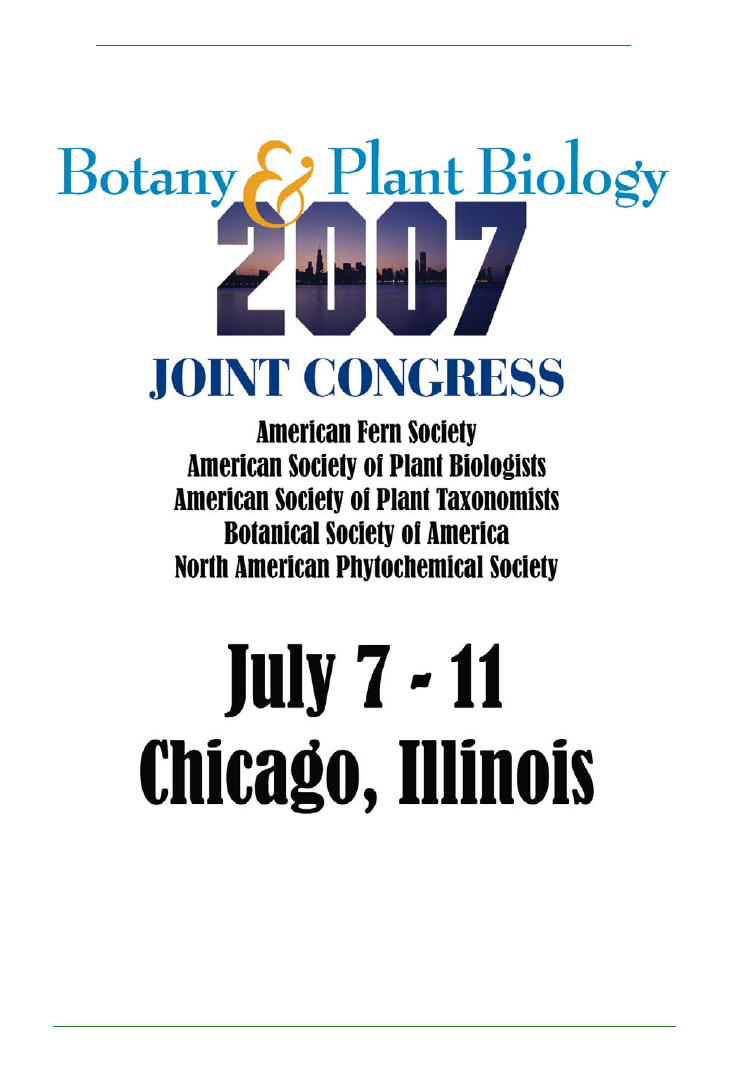
108
Plant Science Bulletin 52(3) 2006